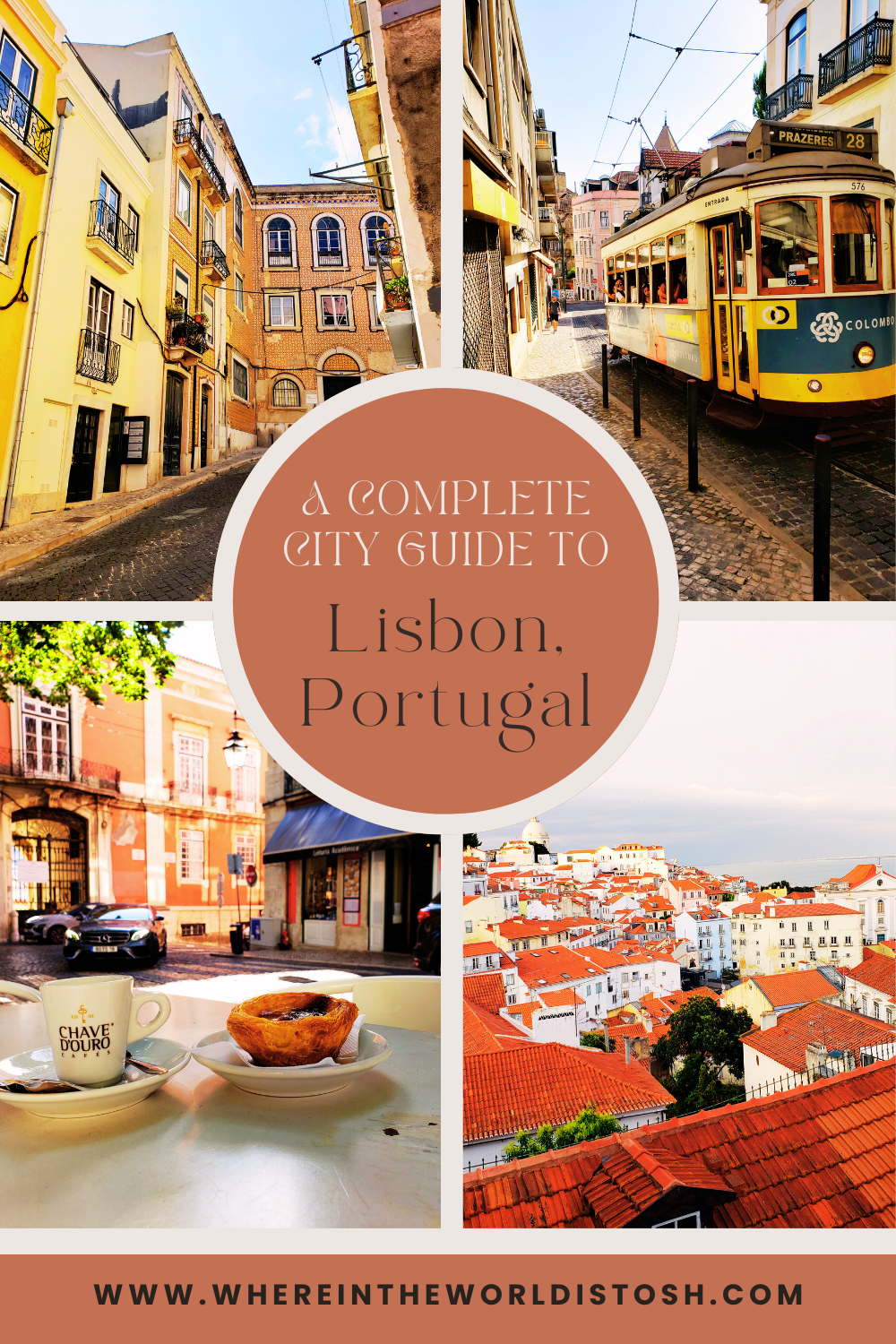This post contains affiliate links to products and or services. I may receive a small commission for purchases made through these links, but with no additional costs to you.
Noted as of one Europe’s most attractive and oldest capital cities, Lisbon, or Lisboa, is a hotbed for tourists and has exploded in popularity over the last five years.
Sprawling with innovative restaurants with world renowned chefs, stunning old world architecture, attractive colourful street corners and a vibe unlike any other capital city in the world, it’s easy to see why Lisbon, Portugal is the place to be.

Lisbon is quickly becoming one of the major economic centres in Europe, with a growing financial sector and is also served by one of the largest container ports on Europe’s Atlantic coast. The Lisbon port also serves as a major hub for cruise ships, which bring in around 500,000 people in cruise-related activities in the city every year. Additionally, the Humberto Delgado Airport is located approximately 7 kms of the city’s limits. It served approximately 28.4 million passengers in 2022, being the busiest airport in Portugal, the fourth busiest in the Iberian Peninsula and the 14th busiest in Europe.
To say that Lisbon is a bustling city is quite the understatement.
Read more: How To Spend 72 Hours In Porto, Portugal
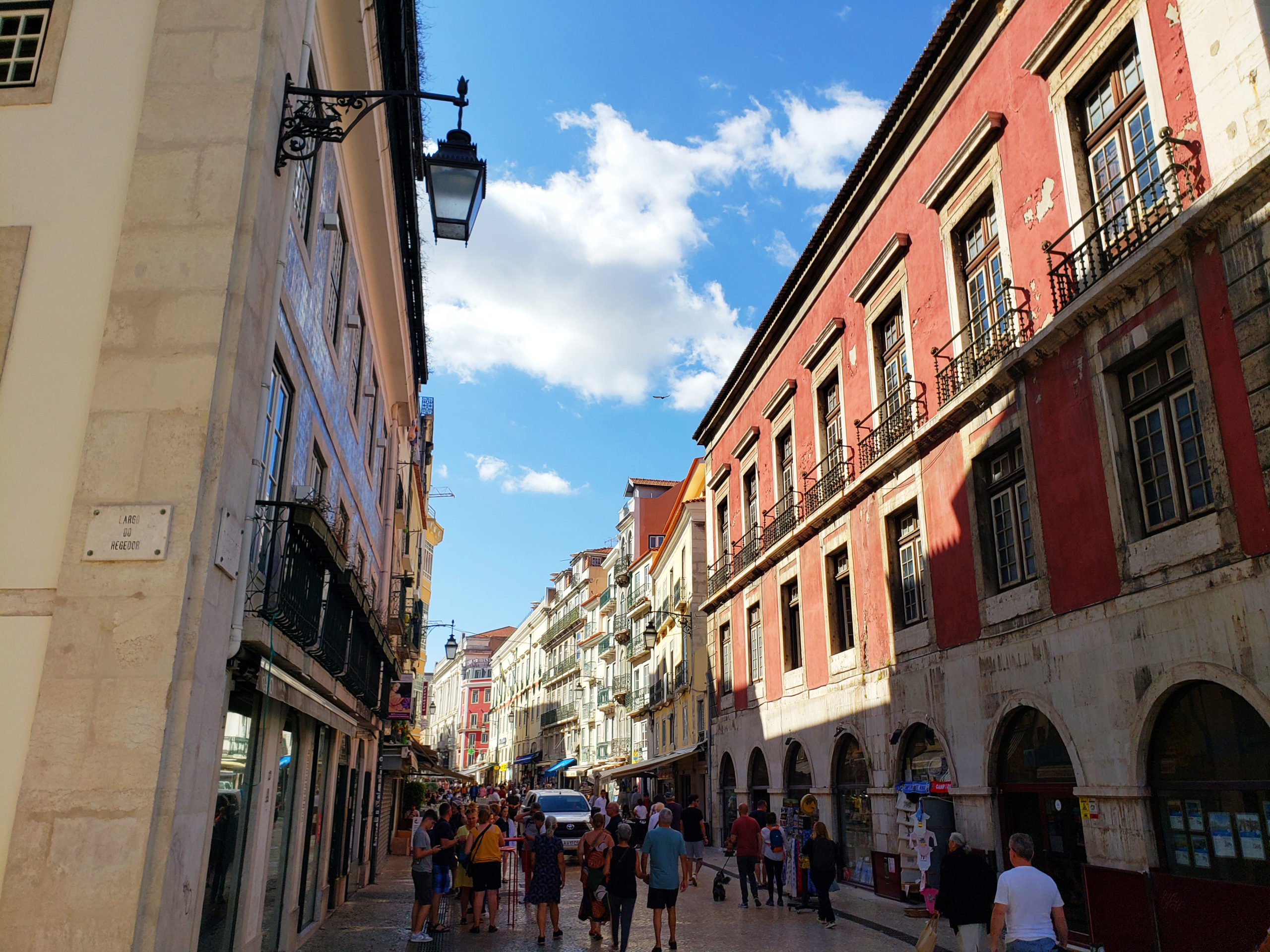
Broken into districts, Lisbon’s quaint neighbourhoods each have their own charm to offer visitors depending on what they are looking for in a holiday. Whether you are looking to immerse yourself in the quiet district of Alfama, surrounded by old locals, tiny narrow alleys and family run restaurants, or if you want to party the night away in the never seems to sleep district of Bairro Alto, Lisbon is a city that will meet all of your wants and needs of a tourist.
Although Lisbon’s popularity has grown over the years, there are still ways to beat the, what seems like, never ending crowds of tourists that pop up all throughout the city at any given time of year. Travelling during the off season will certainly help beat the long lines of people that take over the city attractions and if you’re not a morning person, well, in Lisbon, you better learn to be one because this is one of the ways I found to beat the throngs of tourists throughout the day.

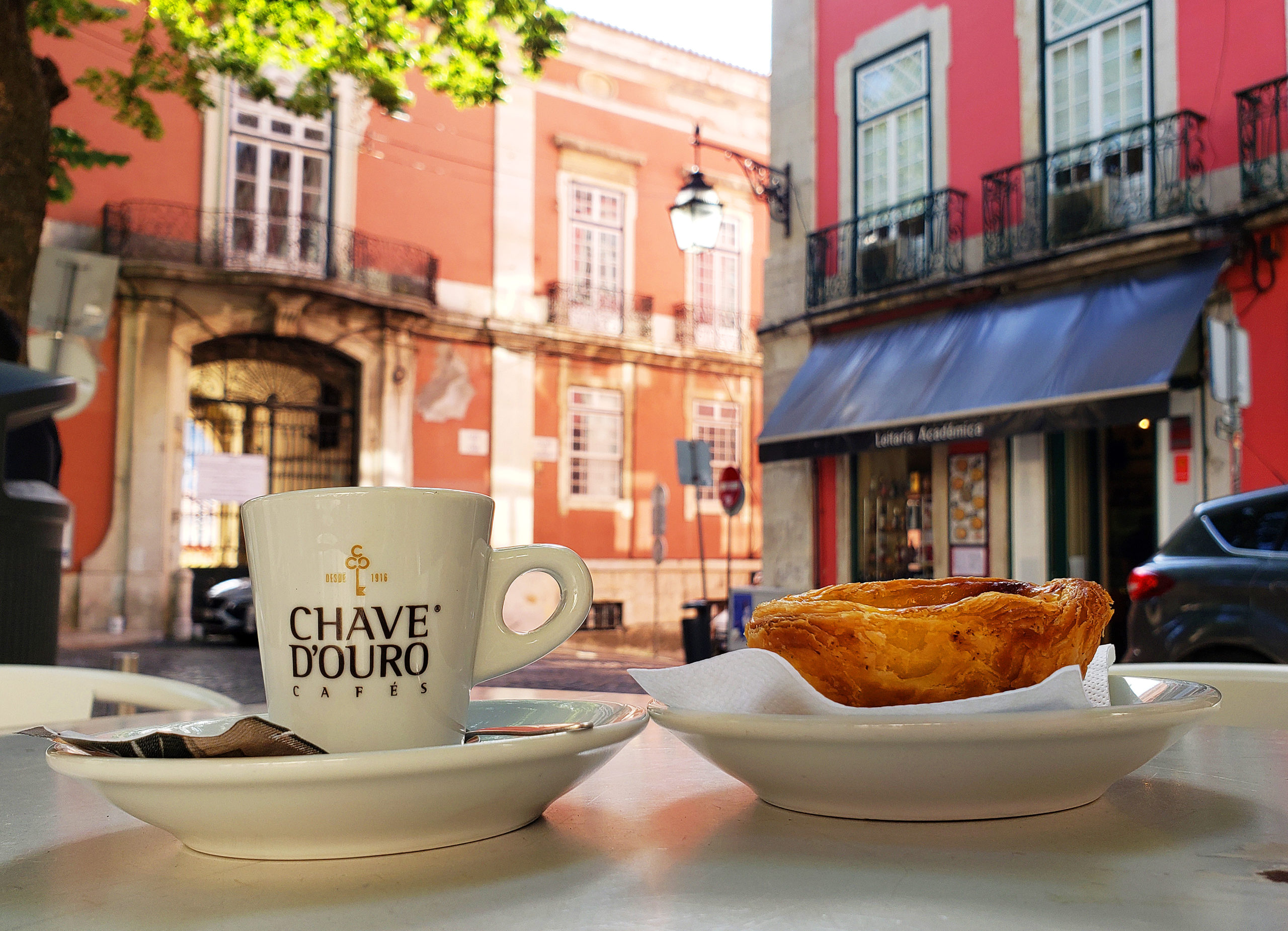
That being said, don’t let the thought of large crowds of tourists turn you off from visiting this insanely gorgeous city. Lisbon was without a doubt, one of my favourite cities I’ve visited in Europe and one that I would definitely see myself returning back to. With so much to see, so much to do, friendly locals and a killer food scene (hello, bifanas!), you can easily spend a full week here and not even make a dent in seeing everything.
I spent a total of 4 days exploring Lisbon during my stay and saw quite a bit, so if you are planning a trip to Portugal, keep reading for my comprehensive city guide for Lisbon.
I’ll cover everything you need to see and also cover some over-rated attractions that you can skip.
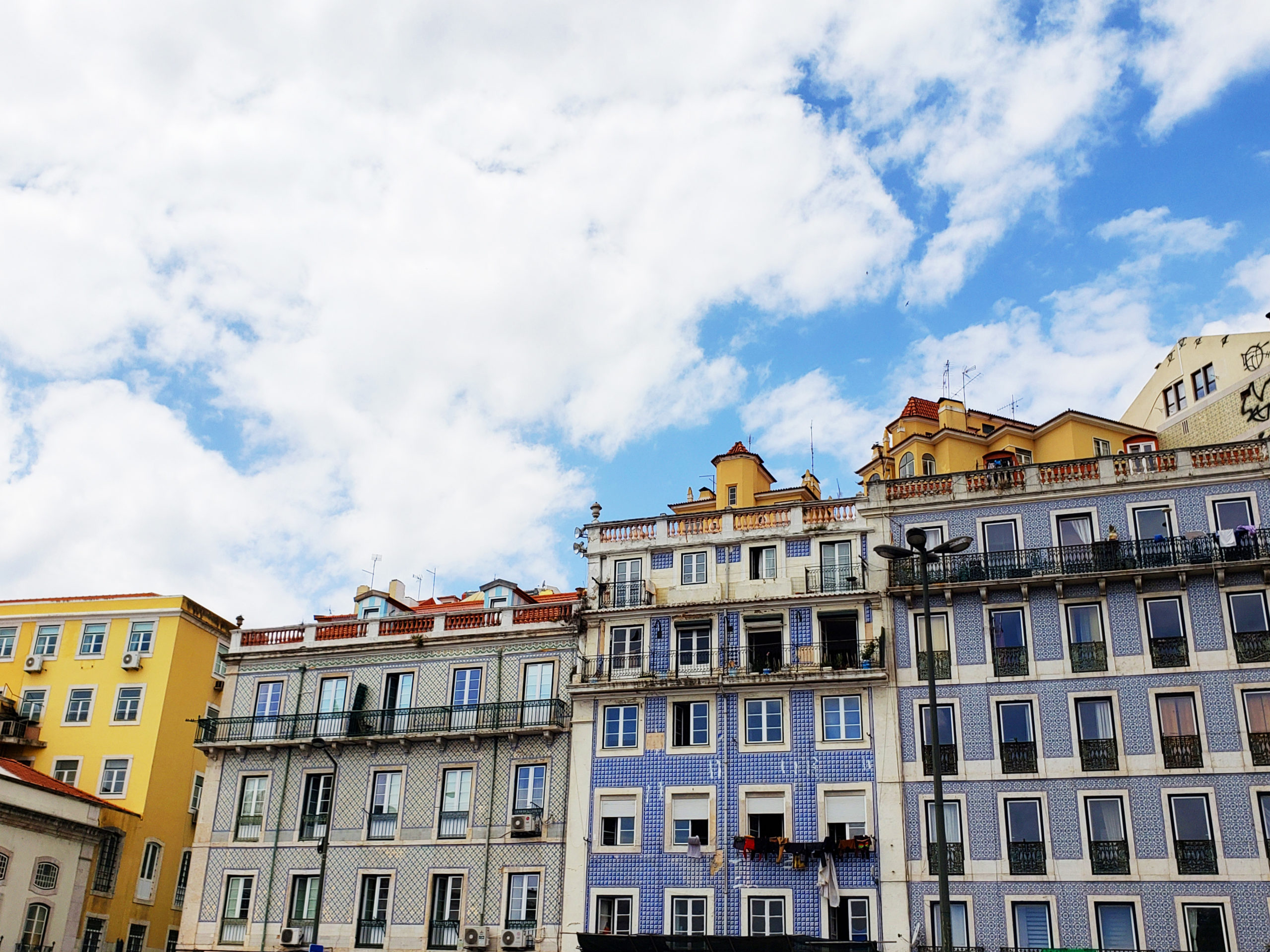
How To Get To Lisbon
Being the major transport hub that Lisbon is, it is easy to get to Lisbon’s city centre in more ways than one. If you’re arriving via any other country in Europe, there are numerous direct flights and train journeys that you can take to get you right into the heart of Portugal’s capital city. Arriving from North America is also very easy and you can score direct flights at a reasonable cost from every major city in Canada and the United States. Coming from Toronto’s Pearson Airport (YYZ), I took a direct flight with TAP Air Portugal direct to Lisbon’s Humberto Delgado Airport (LIS) in approximately 7.5 hours. Located a mere 7 kilometres away from Lisbon’s city centre, getting into the city from the airport is quick and very cheap and will run you about €1,90. Lisbon has numerous metro lines and therefore numerous train stations, so I suggest researching where your hotel/Airbnb is before you hop on, so you know which line to take, or if any transfers are needed to get you as close as possible to your accommodations, to save you the hassle of dragging your belongings up a steep incline. The major train stations in Lisbon are Rossio, Santa Apolónia, Cais do Sodre, Entrecampos and Estação do Oriente. It’s important to know which area of Lisbon you are staying in, as these each serve a different area of the city.

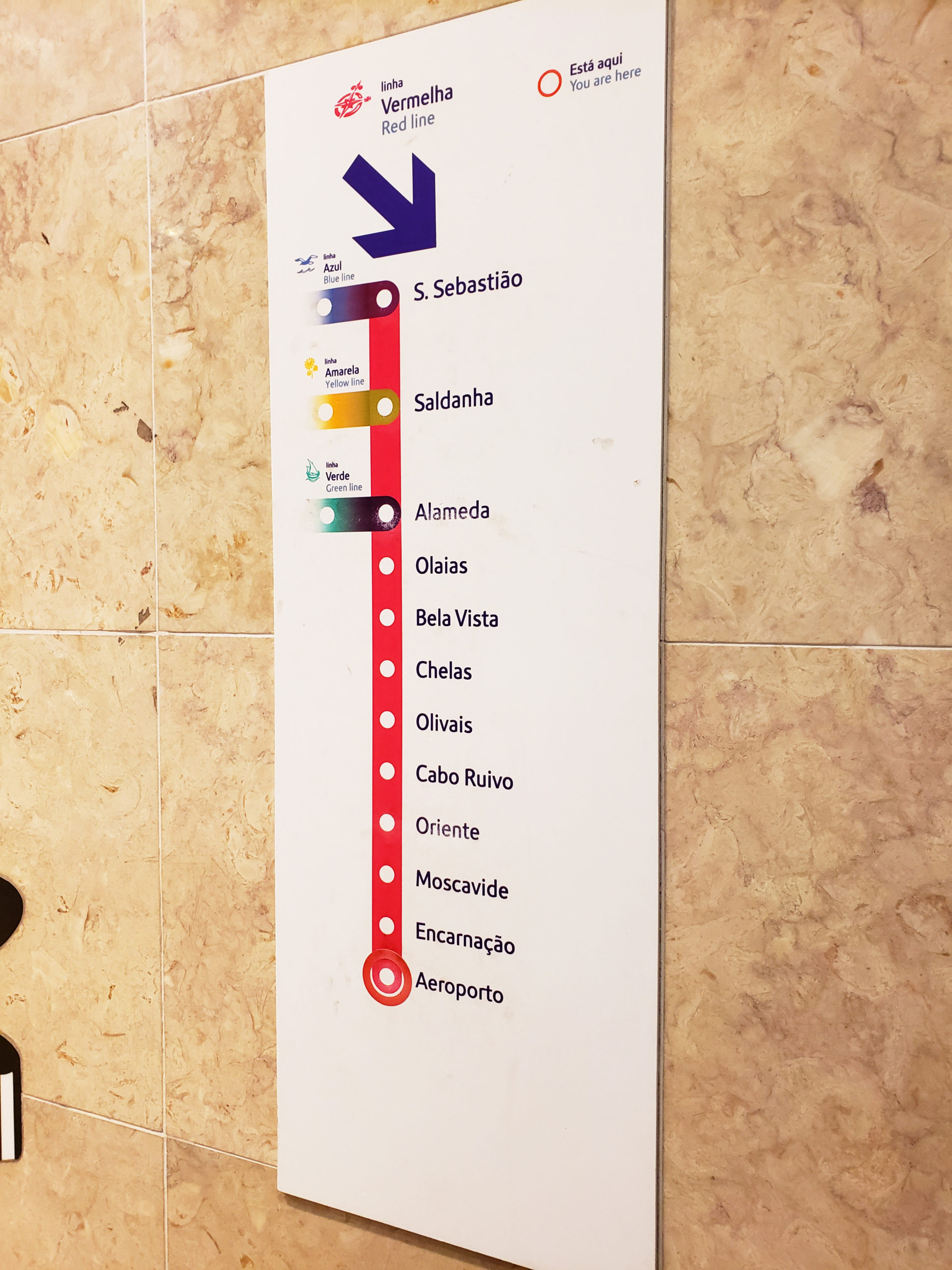
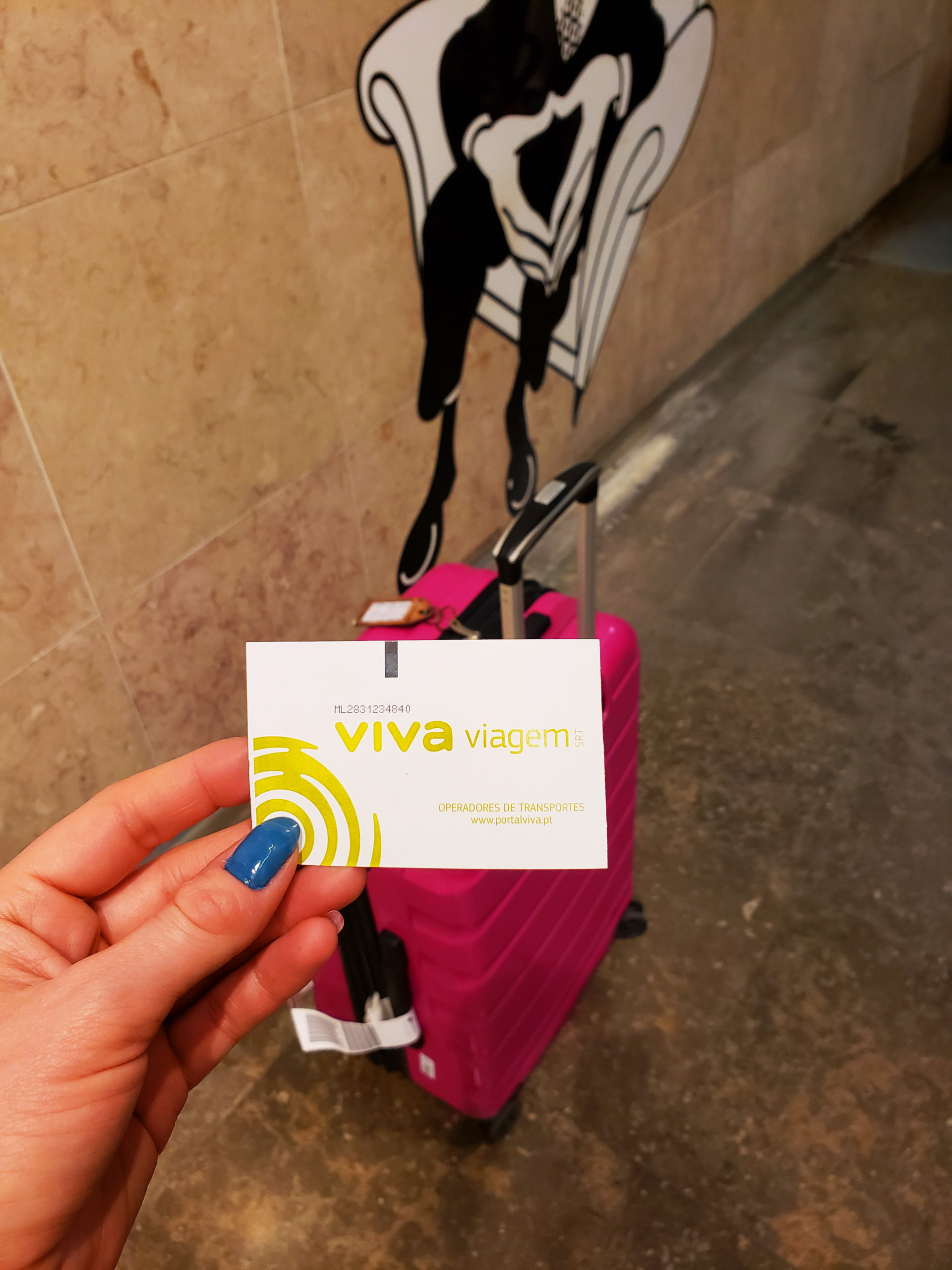
Getting Around Lisbon
If you’re heading to Lisbon, you have probably heard about its infamous hilly terrain, which can be off-putting to those that dread stairs and hill climbing, especially in the scorching summer temps! Fret not, friends. Lisbon is home to one of the most comprehensive and practical subway systems I’ve seen in Europe and doesn’t get as much praise as I think it deserves. Getting around the city by metro is easy, cheap and very reliable (if they don’t go on strike that is LOL). I chose to mostly walk everywhere. Lisbon is extremely walkable if you are keen to get your steps in and burn off all the Pasteis de nata that you’ll be scarfing down. Yes, Lisbon is hilly, but don’t let that put you off. Most of the tourist sites and points of interest are located quite close, albeit you’ll need to walk a kilometre straight up a hill, but I have faith in you. Go get some walking done. It’s also a great way to discover tiny hidden gems, which Lisbon is quite full of. You never know what little local restaurant, or bar you’ll stumble upon.


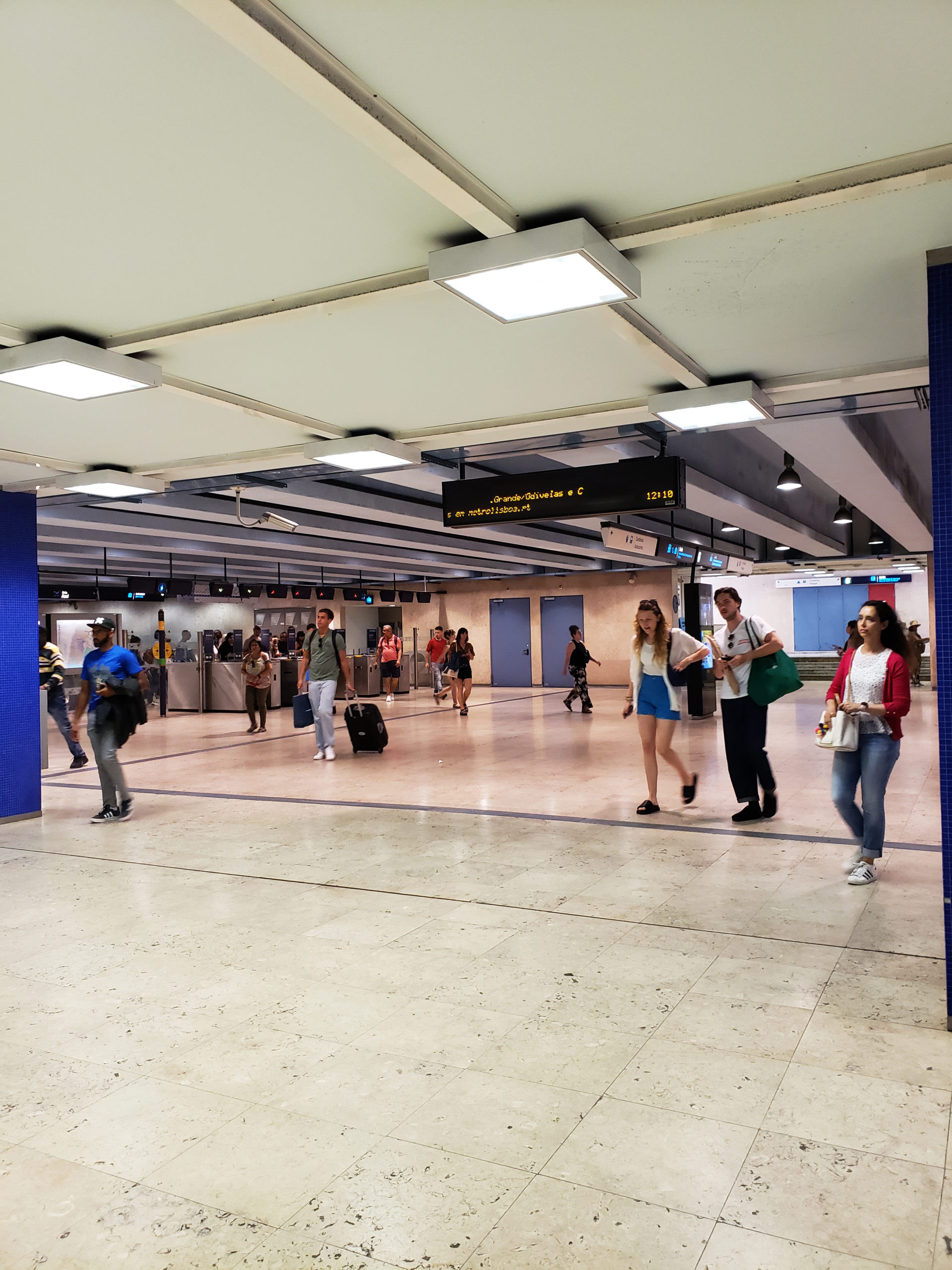
Get Your Steps In
Again, I can’t stress enough how many steps you’ll get in while visiting Lisbon. During my time in Portugal, I LOST 3 pounds…yes, you read that correctly and I was eating desserts, carbs and drinking beer all week long. I chalk that up to all of the walking and stair climbing that I did. If you’re looking to discover hidden gems that only locals may know about, you’ll never discover them while taking a cab from place to place. Some of my favourite spots were discovered while on foot, taking little shortcuts through streets comprising solely of stairs and tucked away from the main streets.
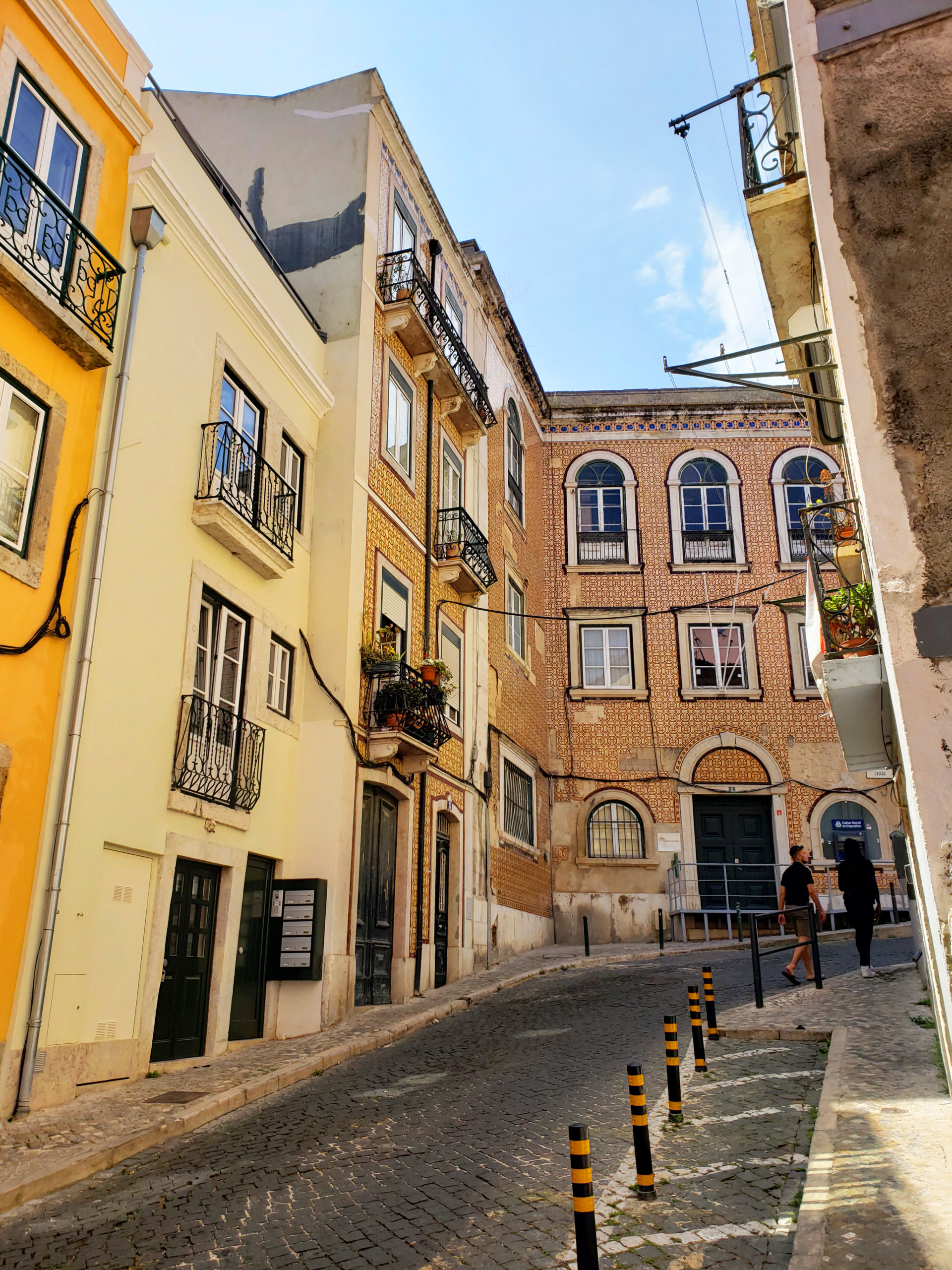

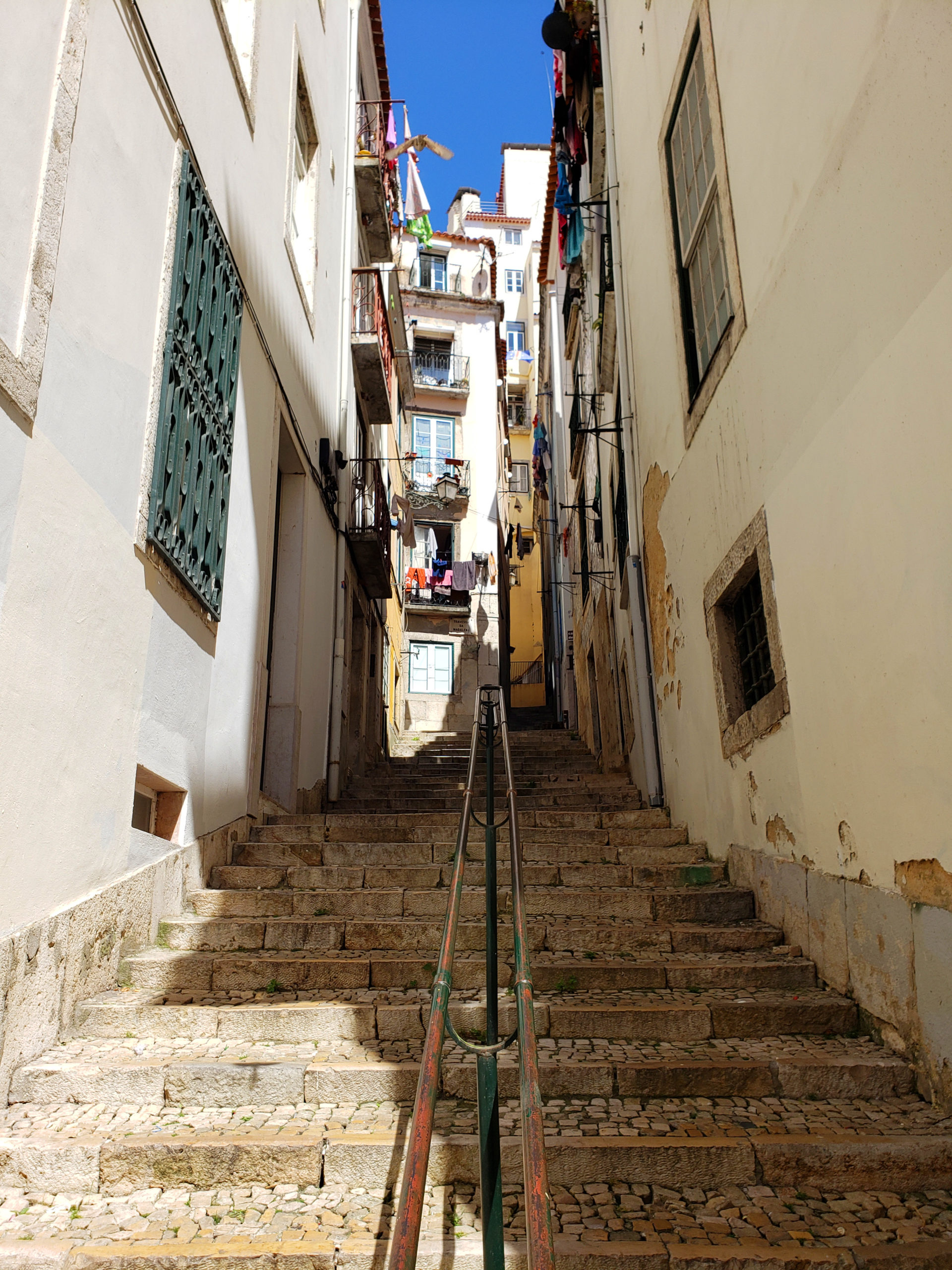

Grab A Lisbon City Card
If you’re spending more than 2 or 3 days in Lisbon and want to get the best bang for your buck, then grab a Lisbon City Card. The Lisbon City Card will grant you free entrance into some attractions, free transportation on the Metro lines, buses and trams, discounts on some restaurants, as well as fast tracking through the sometime insane lineups at major tourist attractions. The card is available to purchase online, in the airport and at most tourist information centres throughout Lisbon and can be bought for 24, 48, or 72 hours.
Take A Day Trip
Take advantage of Lisbon’s central location and hop on one of the many tram routes, subway lines, or train routes and take a day trip to discover some Portuguese towns outside of the capital city. Getting out of Lisbon and away from the throngs of tourist is good for the soul and a great way to decompress during your visit. Some day trip locations are: Sintra, Cascais, Évora, Tomar or Nazaré. During my stay in Lisbon, I hopped on a train and took a day trip to the gorgeous town of Évora, which is the capital of Portugal’s south-central Alentejo region. In Évora’s historic centre, you’ll find the ancient Roman Temple of Évora (also called the Temple of Diana), which may make you think you’ve been transported to Greece. Stunning whitewashed houses surround the Cathedral of Évora, a massive Gothic structure that was constructed starting in the 12th century. The Igreja de São Francisco features Gothic and Baroque architecture along with the skeleton-adorned Chapel of Bones beneath. Definitely a must visit and less than 2 hours away from Lisbon with one train station transfer at Estação do Oriente.
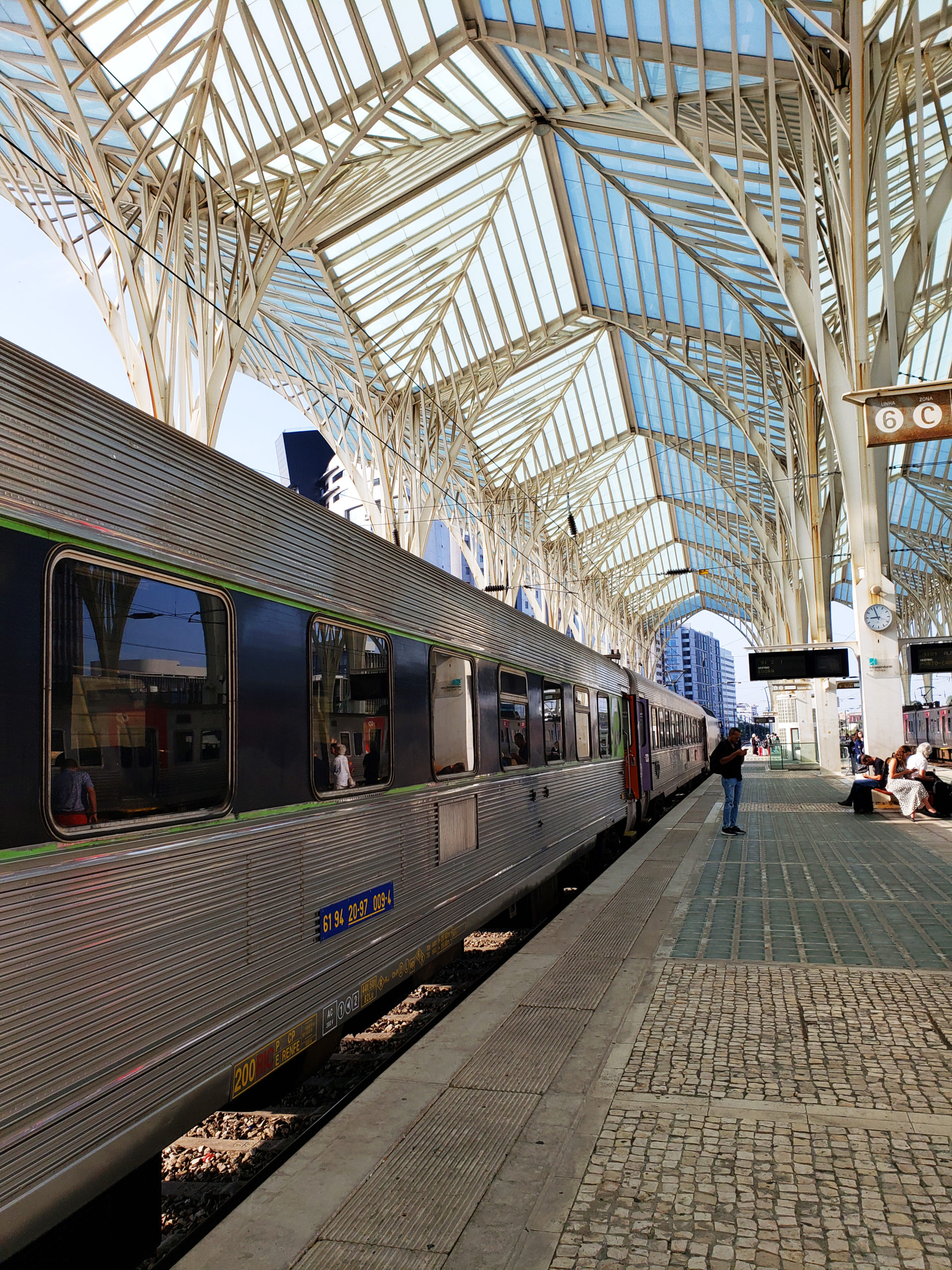
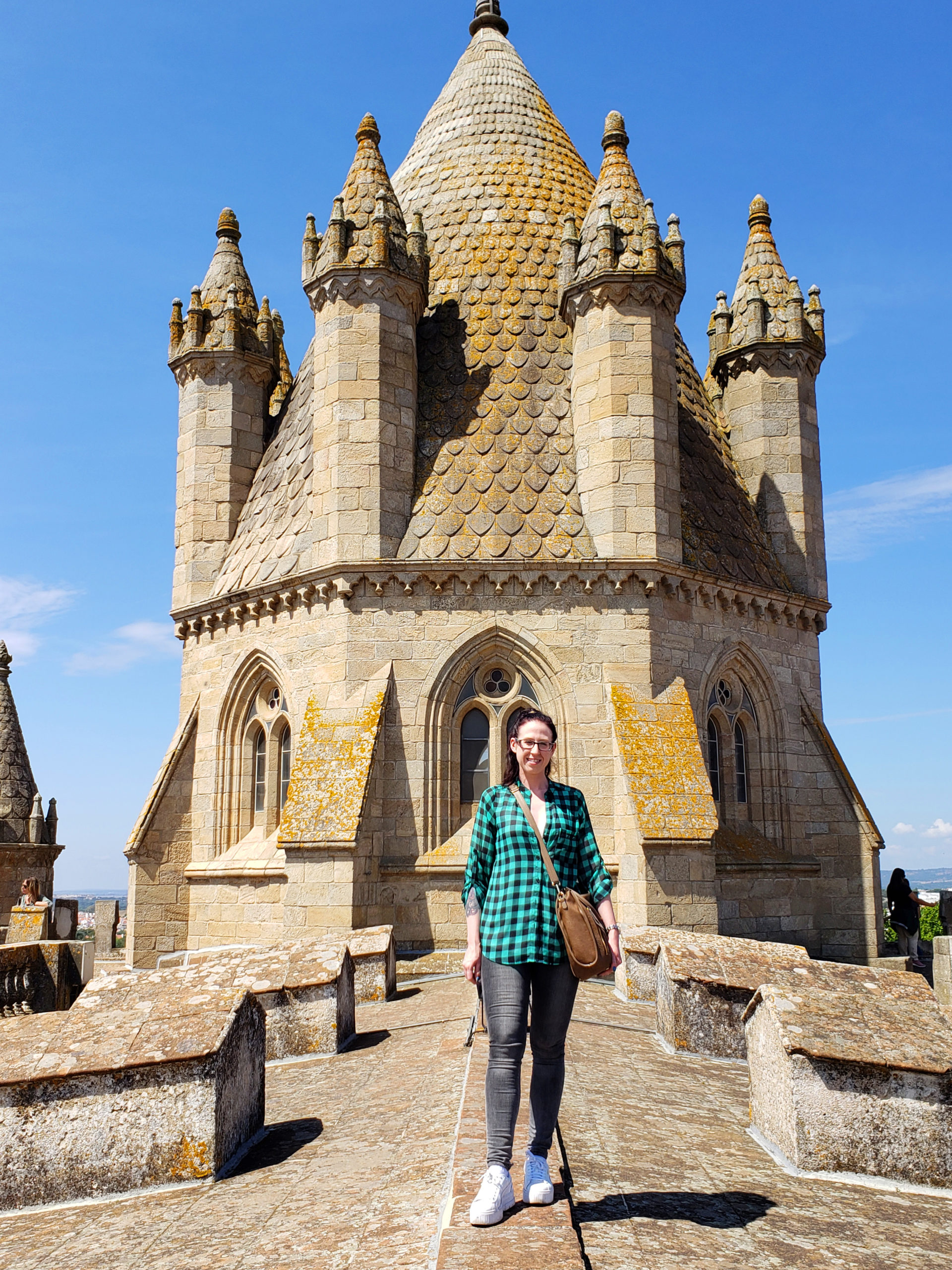

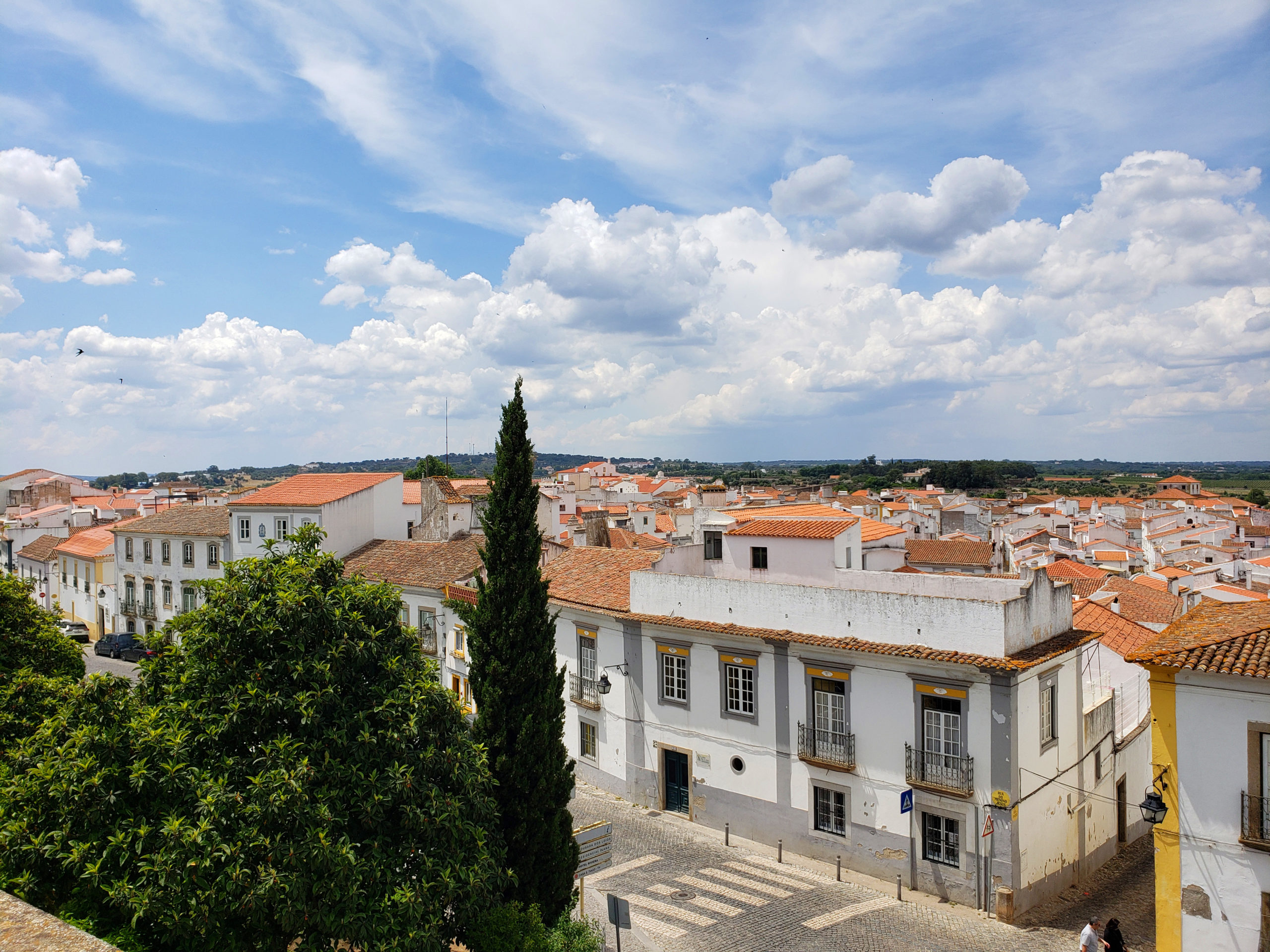
Torre de Belém
Situated along the banks of the Tagus River, the Torre de Belém, or Belém Tower, juts out of the sea like a stone castle structure and dominates the river’s edge. This breathtaking structure is a 16th century fortification located in Lisbon that served as a point of embarkation and disembarkation for Portuguese explorers and as a ceremonial gateway to Lisbon. Complete with a mix of Gothic and Moorish styling, the Belém Tower also has a staircase that takes you to the top of the tower to grant you some spectacular views of the surrounding neighbourhood of Belém. Interestingly enough, the tower was used later on as a state prison rather than a defense port. Torre de Belém is located within the Belém district of Lisbon, which is approximately 2.5 kilometres from central Lisbon and is reached via the E15 tram. If you’re up for it, you can easily walk along the flat terrain to get there as well.
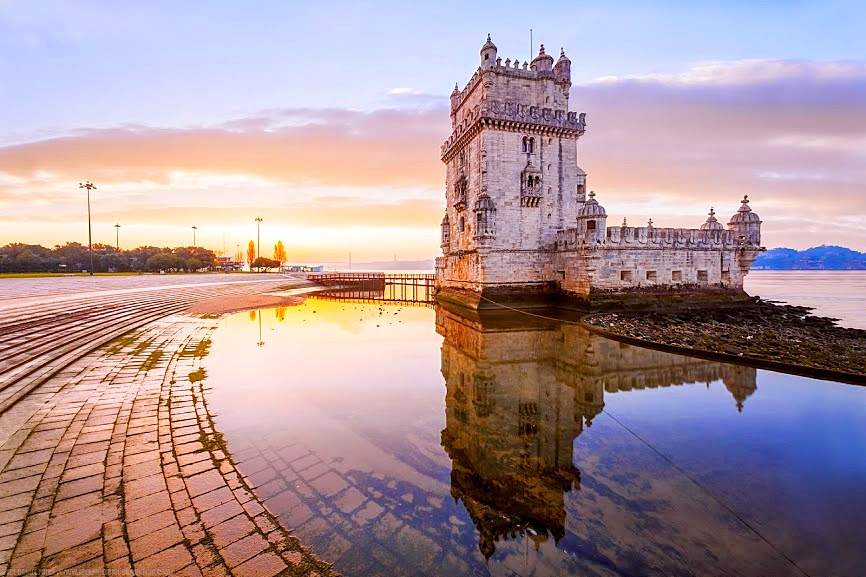 Photo Source
Photo Source
Monastery of Jerónimos
Located a stone’s throw away from the Belém Tower, you’ll come across what is notably one of the most popular tourist sites in all of Lisbon; the Jerónimos Monastery. A monument showcasing pure wealth from the later years, the Jerónimos Monastery was financed on what they say was mostly, “pepper money”, which is from a tax that was levied from spices, precious stones and gold. The highly ornate Monastery was constructed in, or around 1501 and is now a National Monument and a UNESCO World Heritage Site. For its construction, the architect Diogo de Boitaca, used calcário de lioz, which is a gold coloured limestone that was quarried from Ajuda, the valley of Alcántara, Laveiras, Rio Seco and Tercena. The lineup to enter the Monastery can be atrociously long, so having the Lisbon City Card will grant you free entrance, as well as fast track entry, so you can bypass the line. Sounds good to me!
 Photo Source
Photo Source
Padrão dos Descobrimentos
As you can see, the Belém district of Lisbon is full of interesting things to see. The Monument of the Discoveries, or Padrão dos Descobrimentos in Portuguese, is no exception. Standing prominently along the Tagus River, the Padrão dos Descobrimentos is a massive angular structure that commemorates the 500th anniversary of the death of Henry the Navigator. During its inauguration in 1960, 32 ships of 14 nations were present. The structure stands 52 metres high and is a remembrance of all the mariners, royal patrons and all of those that took part of the development of the Portuguese Age of Discovery.
 Photo Source
Photo Source
25 de Abril Bridge
If you think the 25 de Abril Bridge, or 25th of April Bridge, holds a stark resemblance to San Francisco’s Golden Gate Bridge, you aren’t seeing things. After being built in 1966, Lisbon’s famous suspension bridge was named after the revolution of April 25th 1974 that restored democracy to Portugal. Inspired by the Golden Gate Bridge (clearly), the impressive bridge spans 2 kilometres and in 1999, the lower portion was modified to accommodate a railway across the Tagus River.
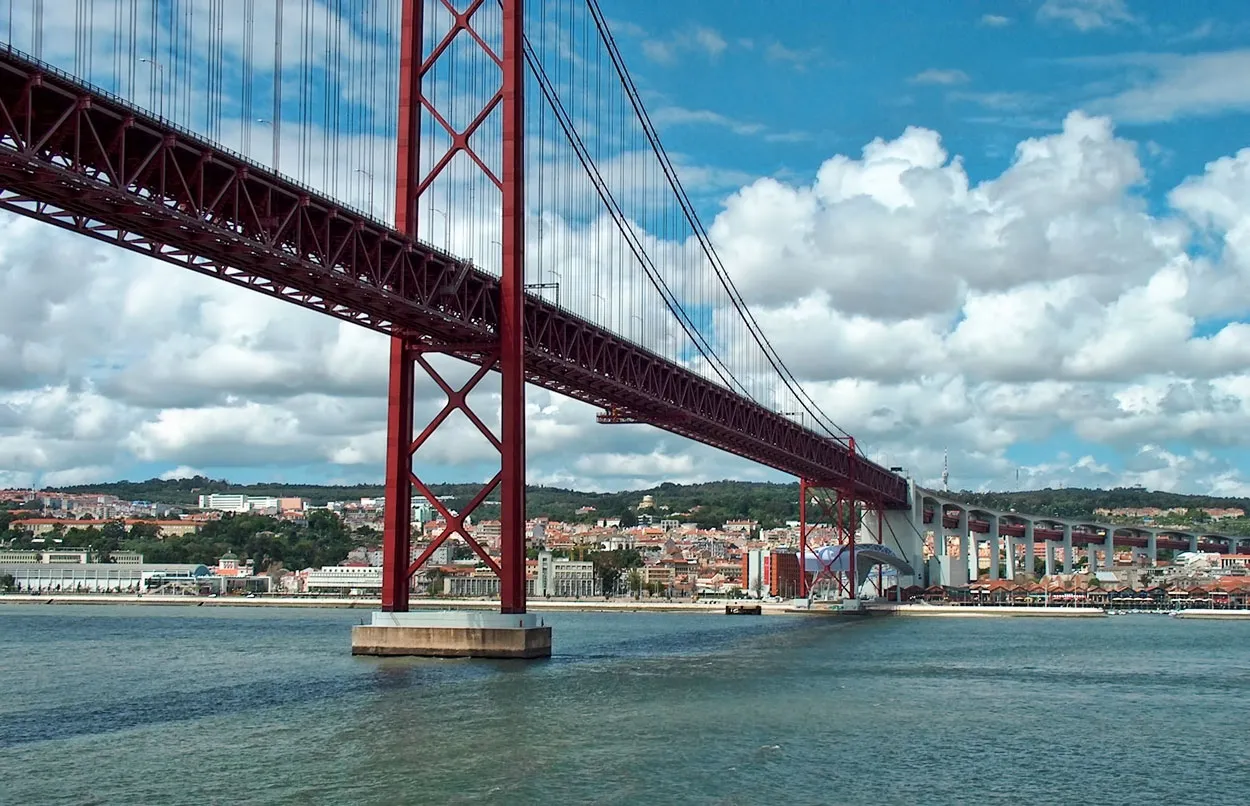 Photo Source
Photo Source
To Ride Tram 28, Or Not?
One of the most iconic tram routes in Lisbon is without a doubt, Tram 28. The photogenic yellow tram (there is a red version too) is mostly known for snaking its way through the tight streets and alleys of the historic Alfama District, while squeaking and squealing around every corner. The starting point is at Martim Moniz Square and goes to Campo de Ourique. Although Tram 28 is just a normal line of public transportation in Lisbon, it happens to go past many of the city’s most significant landmarks in districts like Alfama, Baixa, and Estrela. Because of that reason, it’s become a popular tourist attraction in the city with the long lineups to prove it. During my visit in May 2023, the lineup to get onto Tram 28 was MASSIVE at 9am. In the peak tourist summer months, the queue can sometimes be two hours long! Ya, no thank you. That wait alone and being squished into a tiny tram with 30 people is enough to make me say Tram 28 is not worth the hype. If you really want to take a tram while in Lisbon, some alternative tram routes are tram numbers 12, 15, 18, 24 & 25. 😉

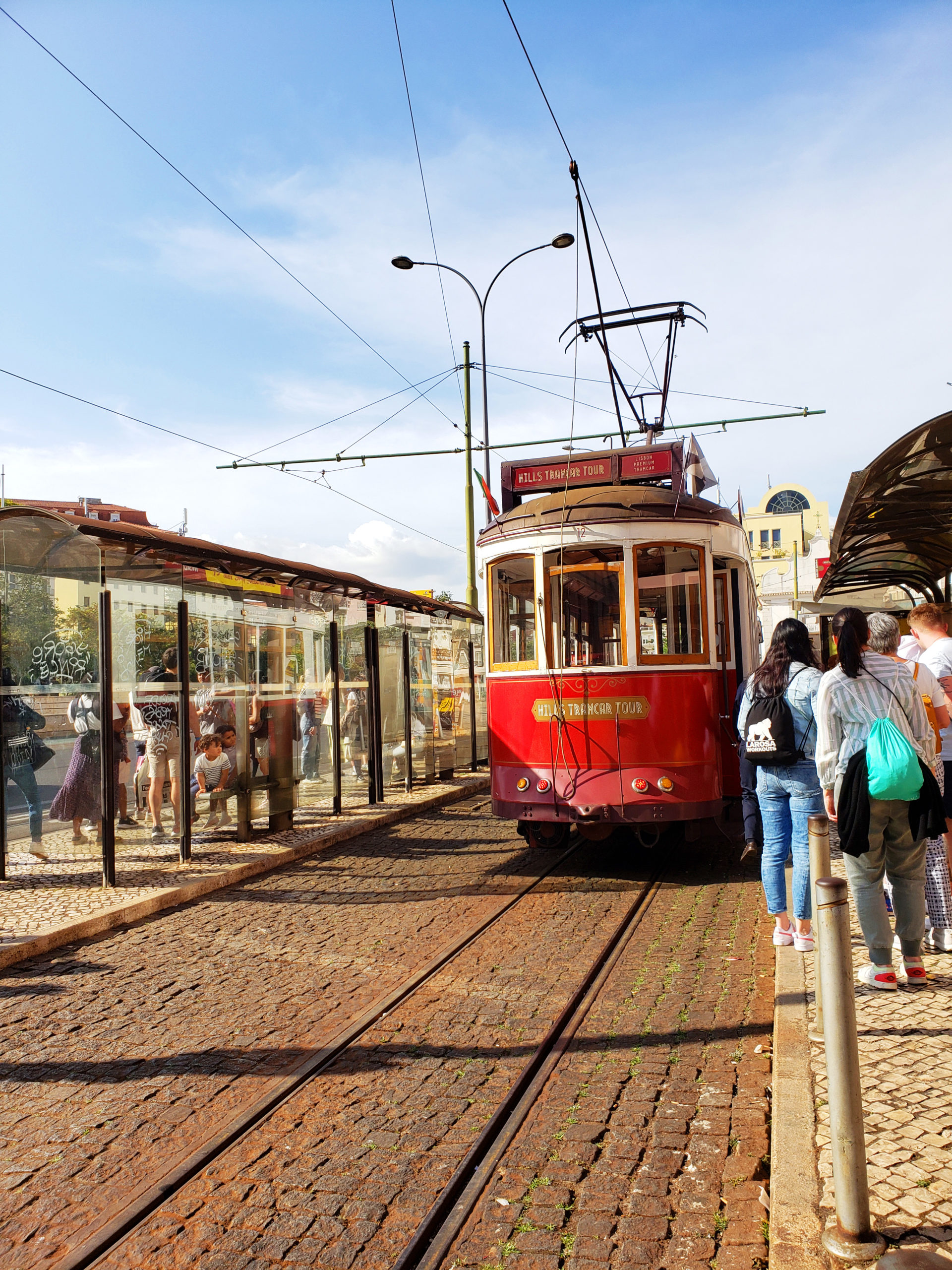


Visit Kiosks Around Lisbon
Lisbon’s kiosk cafés (Quiosque in Portuguese) are one of the most unique places to stop and grab a quick snack, or drink and watch the world go by. Resembling a mix of a closed off gazebo and a food stall, these little gems are dotted all throughout the city and are an integral part of social life in Lisbon. What’s not to love? You sit in a beautiful setting surrounded by greenery, a stunning view, historic points of interest and melt your worries away while sipping on a cold drink, or a cozy espresso. Yes, please!


Alfama District
The oldest and most untouched district in Lisbon; the historic Alfama District. This area of Lisbon is without a doubt, the most atmospheric part of the city. Having been saved from the destructiveness of the 1755 earthquakes, Alfama has managed to keep its old world charm throughout the years. Filled with tiny alleys and steep streets that will test your athletic ability, all the while giving you warm and fuzzy feelings as you hear melancholy Fado music flowing throughout the narrow streets as day turns to night. Alfama was one of my favourite areas that I frequented often, as it was much quieter than other busier areas of Lisbon and it was a goldmine for street photography without the crowds. It’s also a fantastic place to discover hidden local gems free of many tourists.




Baixa District
It was the Baixa District that felt the brunt of the 1755 earthquakes, fires and ultimate near total destruction. After years of reconstruction, this area is now the heartbeat of Lisbon once again. Filled with Neoclassical architecture, a grand plaza and the magnificent Arco da Rua Augusta, you would have never known that the Baixa District was in ruins years before. Using a newly designed grid layout and a marvelous intricately tiled avenue that stretches from the waterfront all the way to Rossio Square, Baixa is now where you’ll find a handful of restaurants, bars, coffee shops and shops of all kinds.

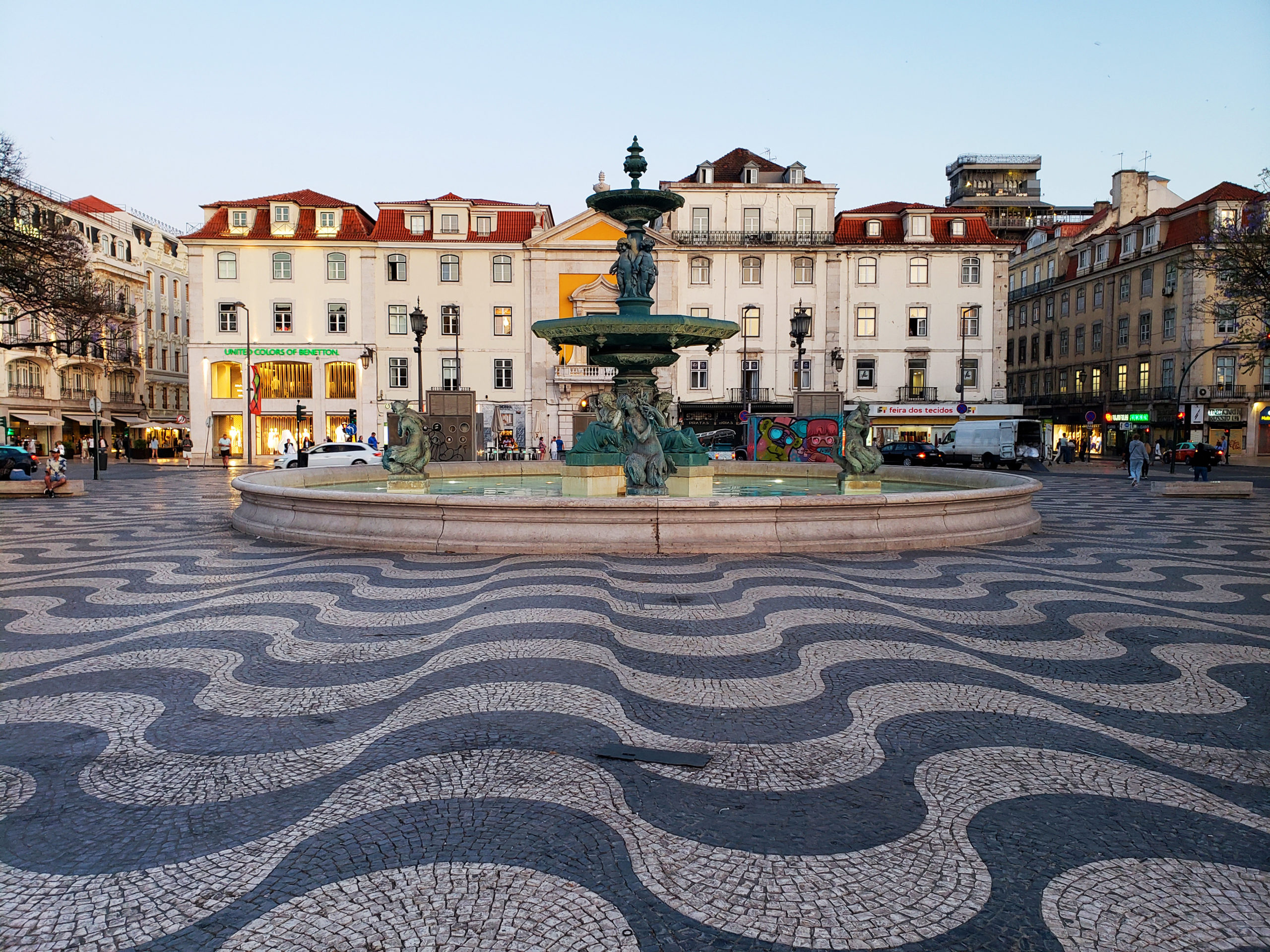

Praça do Comércio
One of the largest and most beautiful squares in all of Europe, Praça do Comércio was once the main port of docking vessels for arrivals to Lisbon before the creation of mass aviation. It’s been the place of many historic events. In February 1908, King Carlos and his son were assassinated while walking through the square, which caused the abolition of the Monarchy and the declaration of the Republic two years later. Now, the square is known for holding concerts and local events and is a major gathering point and tourists attraction. In the heart of the square, you’ll find the statue of José I, mounted on his horse Gentil, which is the work of sculptor Machado de Castro. Within the square, you’ll also find Lisbon’s oldest café, Martinho da Arcada tucked away in a corner, which has a fantastic tiramisu, by the way.




Arco da Rua Augusta
Standing tall and dominating Rua Augusta, is the triumphal Arco da Rua Augusta, which was built to commemorate Lisbon’s recovery after the 1755 earthquakes and was completed in 1873. Head to the top of the arch for absolutely incredible views of the Alfama District and Praça do Comércio below. A lot of people must not know that you can reach the top of the arch. Perhaps that is because only since August 9th, 2013, was the rooftop access grants to the public. Visiting the top is free with the Lisbon City Card, or a reasonable €3,50. Don’t forget to look up when walking under the arch itself, for a glimpse of ornate architectural design that will leave you awestruck.
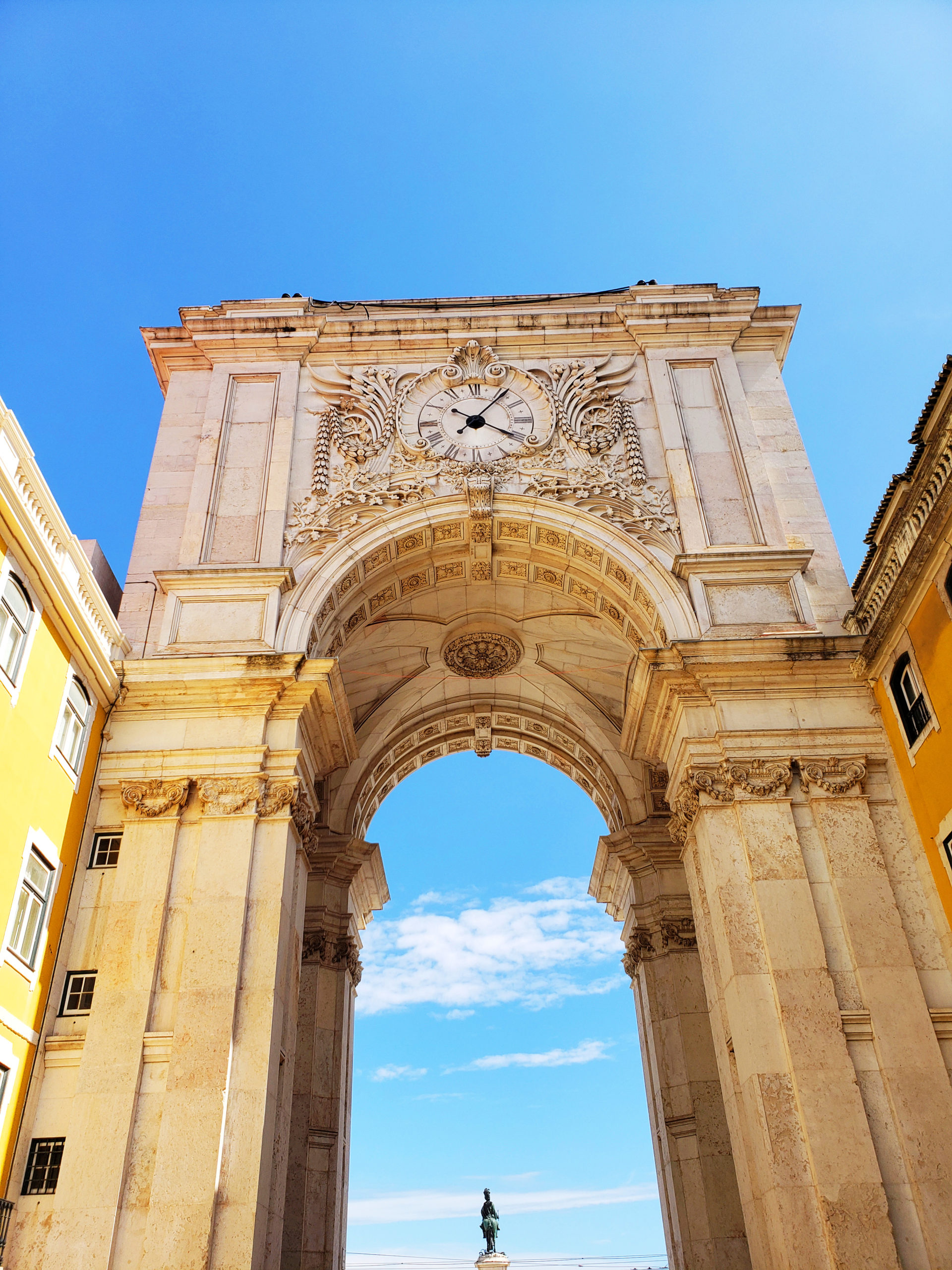
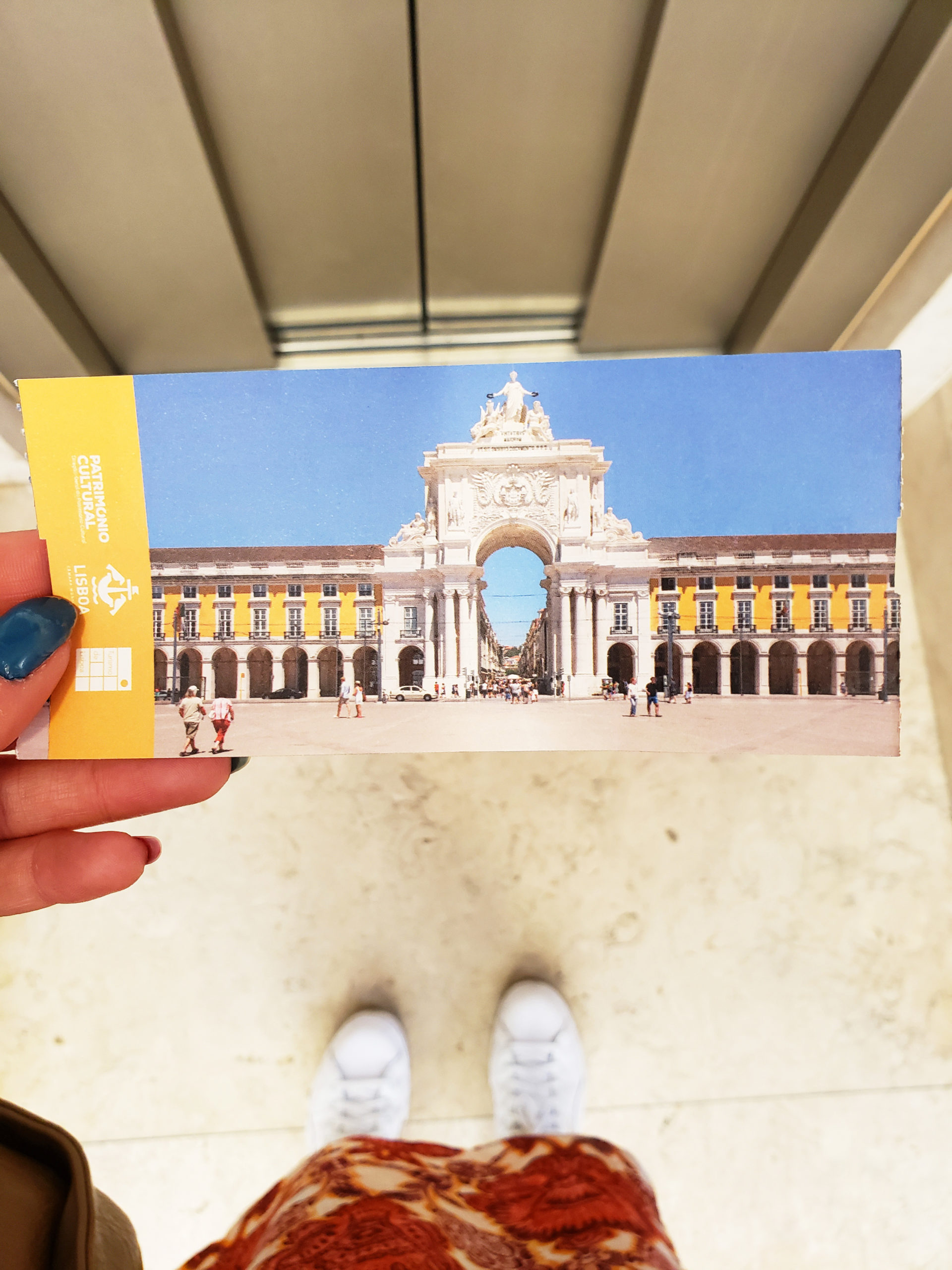

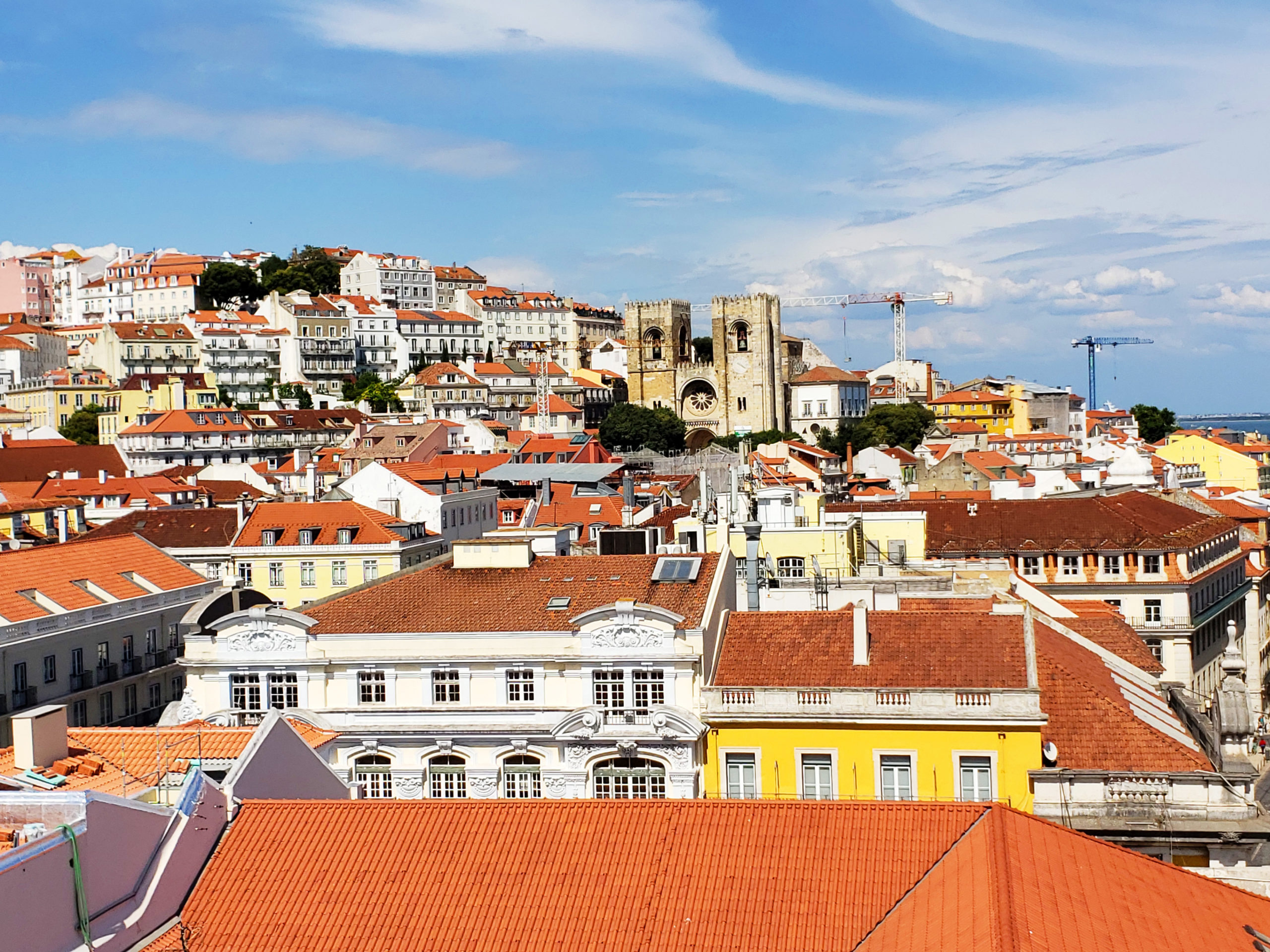
Carmo Convent
Located within the Bairro Alto- Chiado District, you’ll find the Gothic ruins of the Carmelite Church, Igreja do Carmo, or the Carmo Convent. Overlooking the Baixa area, the Carmo Convent stands as a reminder to the 1755 earthquake devastation, which caused the majority of the church to collapse, leaving behind the skeleton structure exposing blue skies above through the remaining delicate pillars. The interior of the church and chancel remains houses a museum, which showcases many ancient finds, a collection of sarcophagi, ceramics and mosaics. There are are ancient mummified children on display, which is pretty creepy, but cool at the same time. Cost of entry at the time of my visit was €5 and worth every penny.



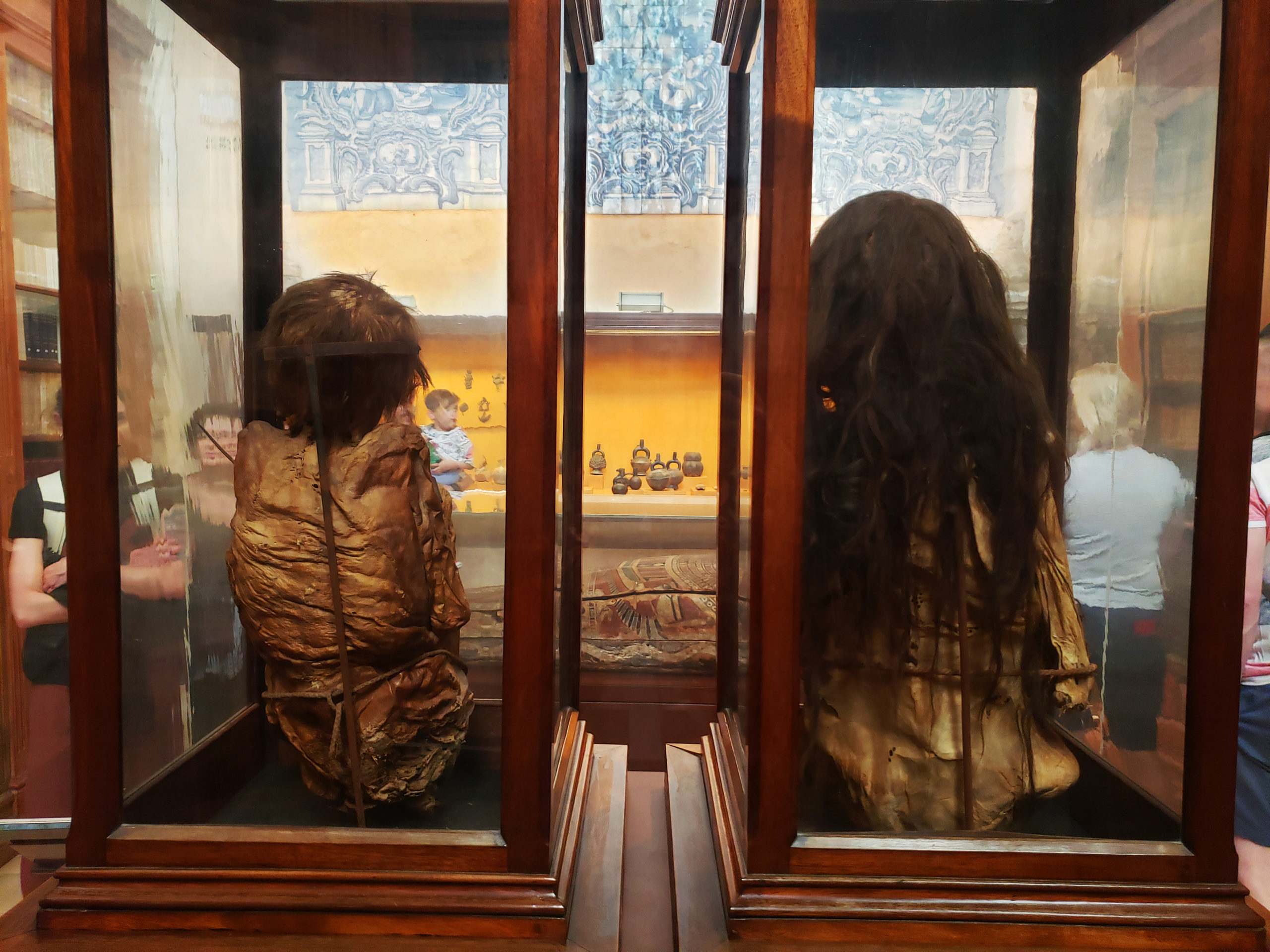
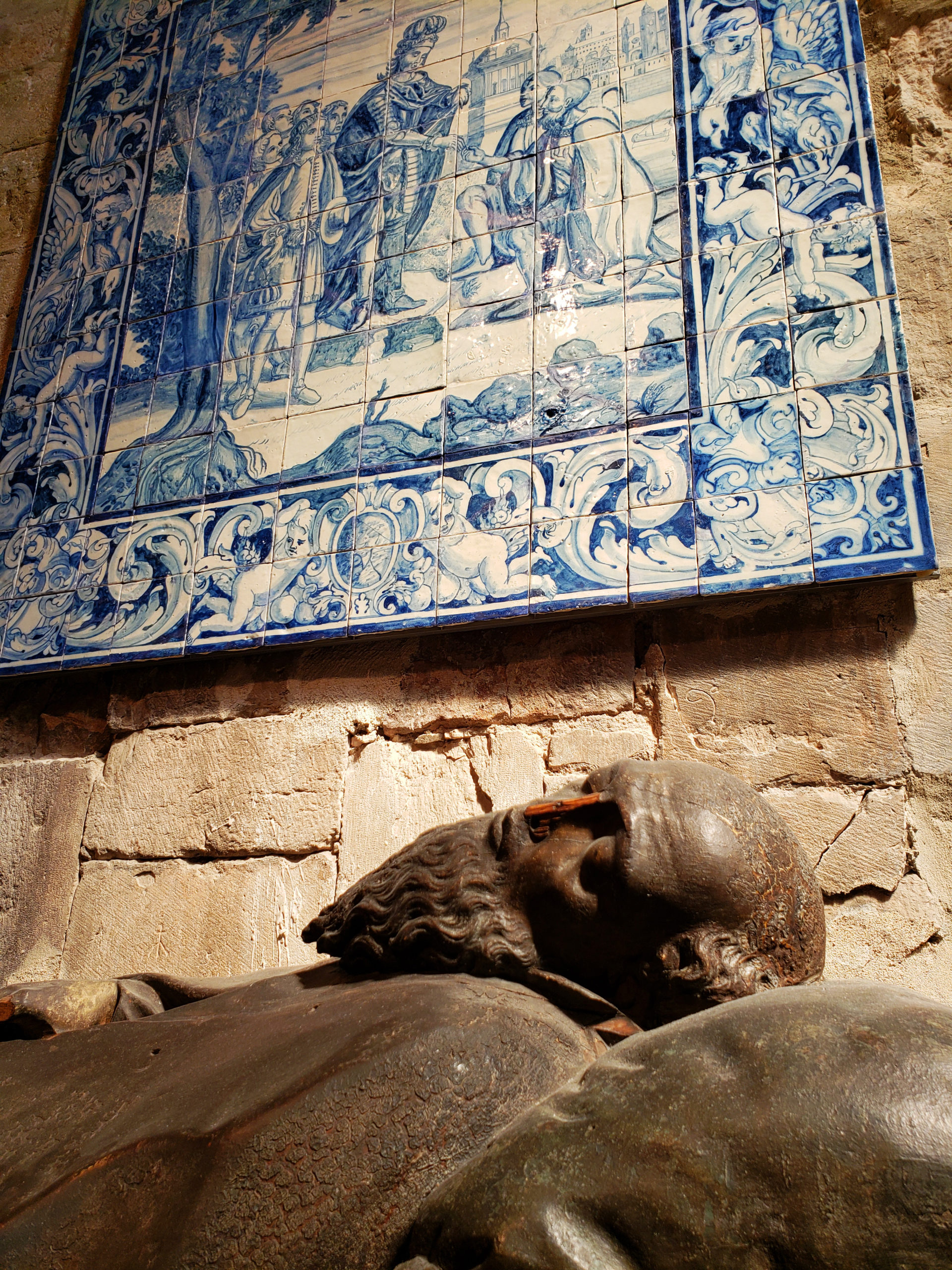
Santa Justa Elevator
This ornate iron structure is the only remaining vertical lift left in Lisbon. Sandwiched between tall buildings, as you walk by, if you aren’t looking, it is almost easy to miss. At the turn of the 20th century, the Santa Justa Lift, or Elevador de Santa Justa, was built by the French architect Raoul Mesnier du Ponsard, who was a student of the famous Gustave Eiffel, who built, you guessed it…the Eiffel Tower. The lift is operated by Carris, the public transport company of Lisbon, and is referred to as route 54E. A return ride costs €5,30, and tickets can be purchased from the ticket office at the base of the lift. But, there is a way to visit the top of the lift and enjoy the sprawling views of Baixa and Rossio for FREE. To pay €5.30 to ride an elevator, no matter how beautiful, seems way too pricey and the lineups can have queues that span an hour long wait. No thanks! To get to the viewpoint for free, when you are at the Carmo Convent, walk behind the church and you’ll find a little viewing area at the back, which is the top of the Santa Justa Lift walkway. You’re welcome.
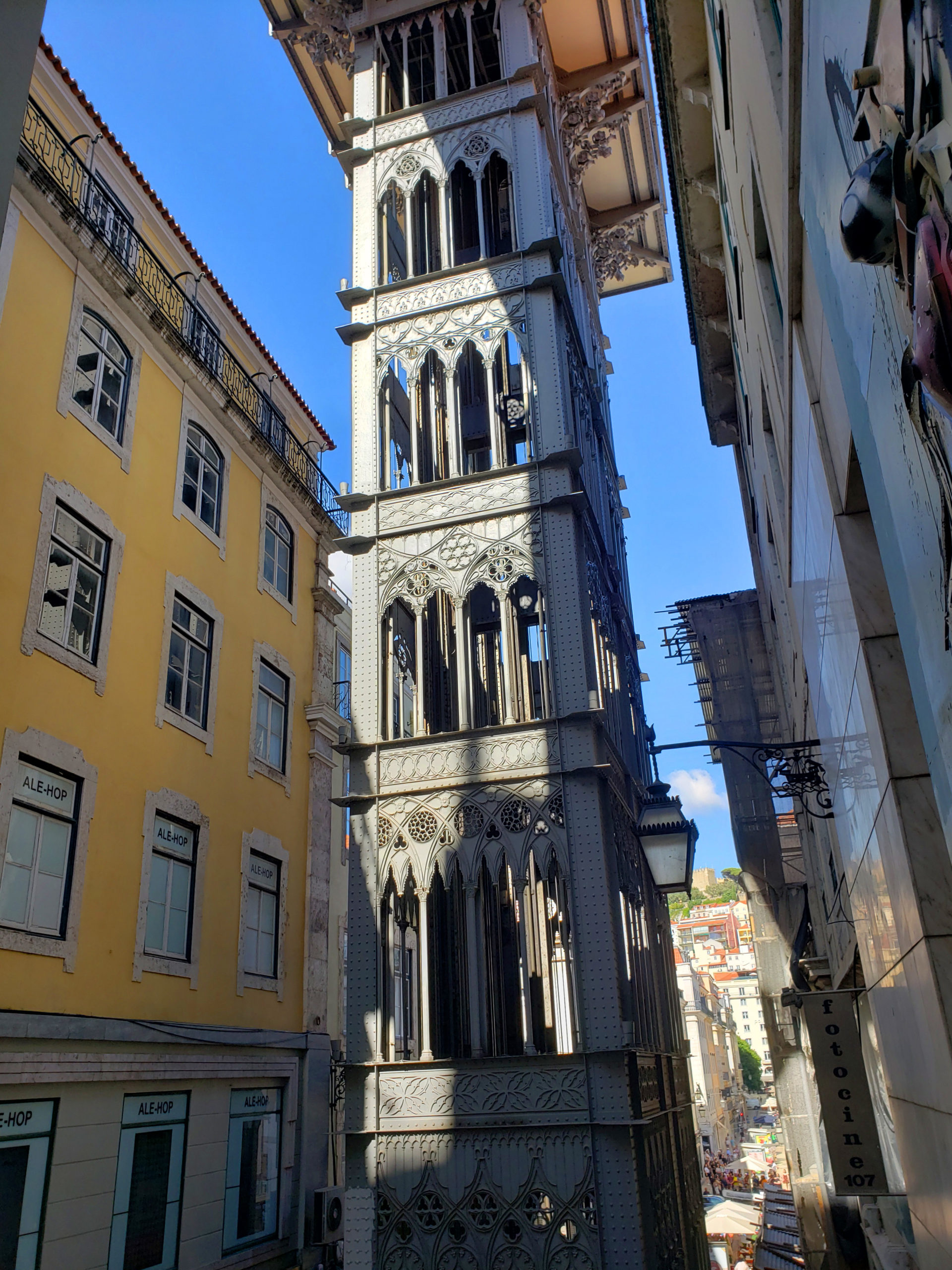
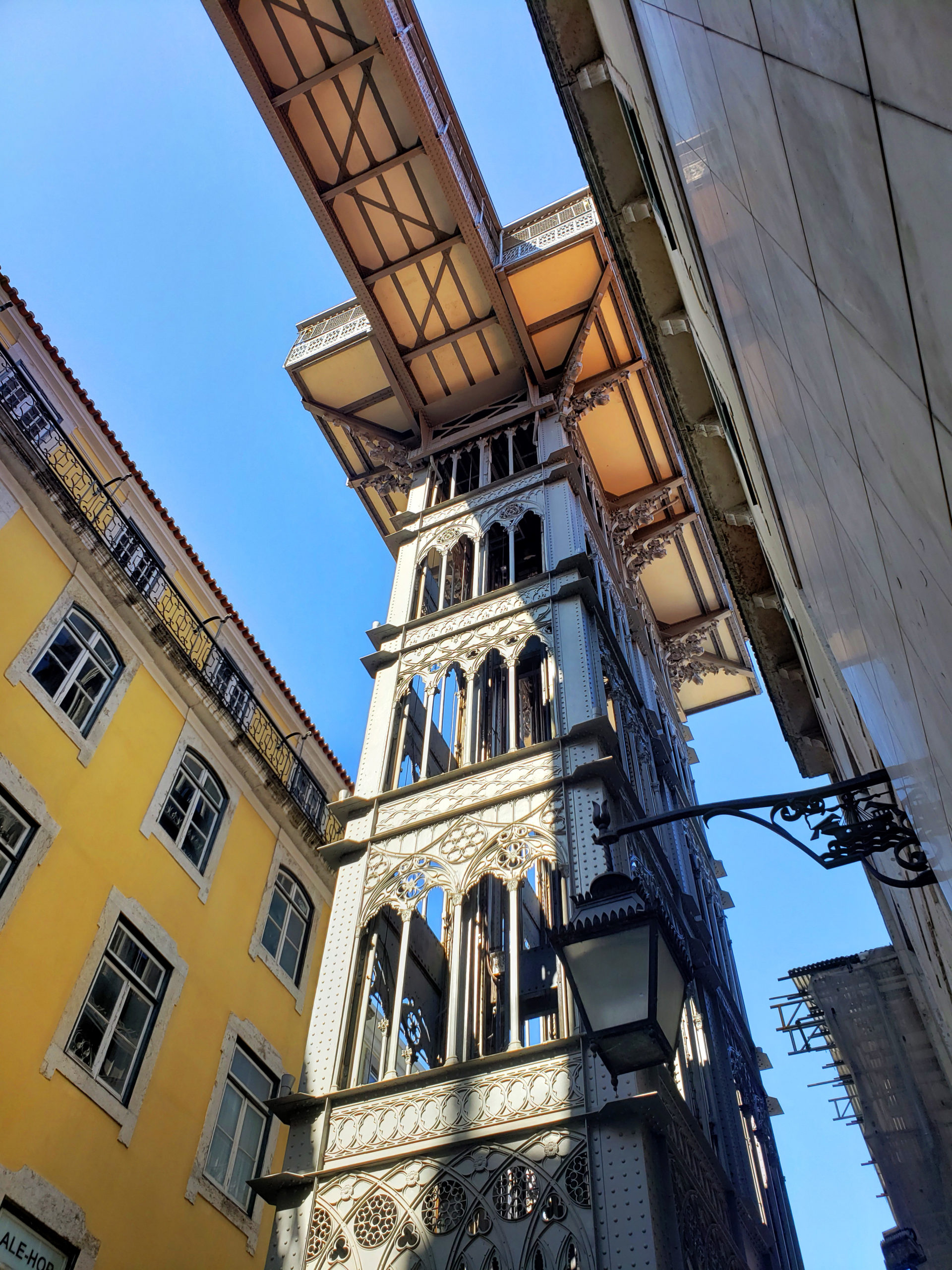
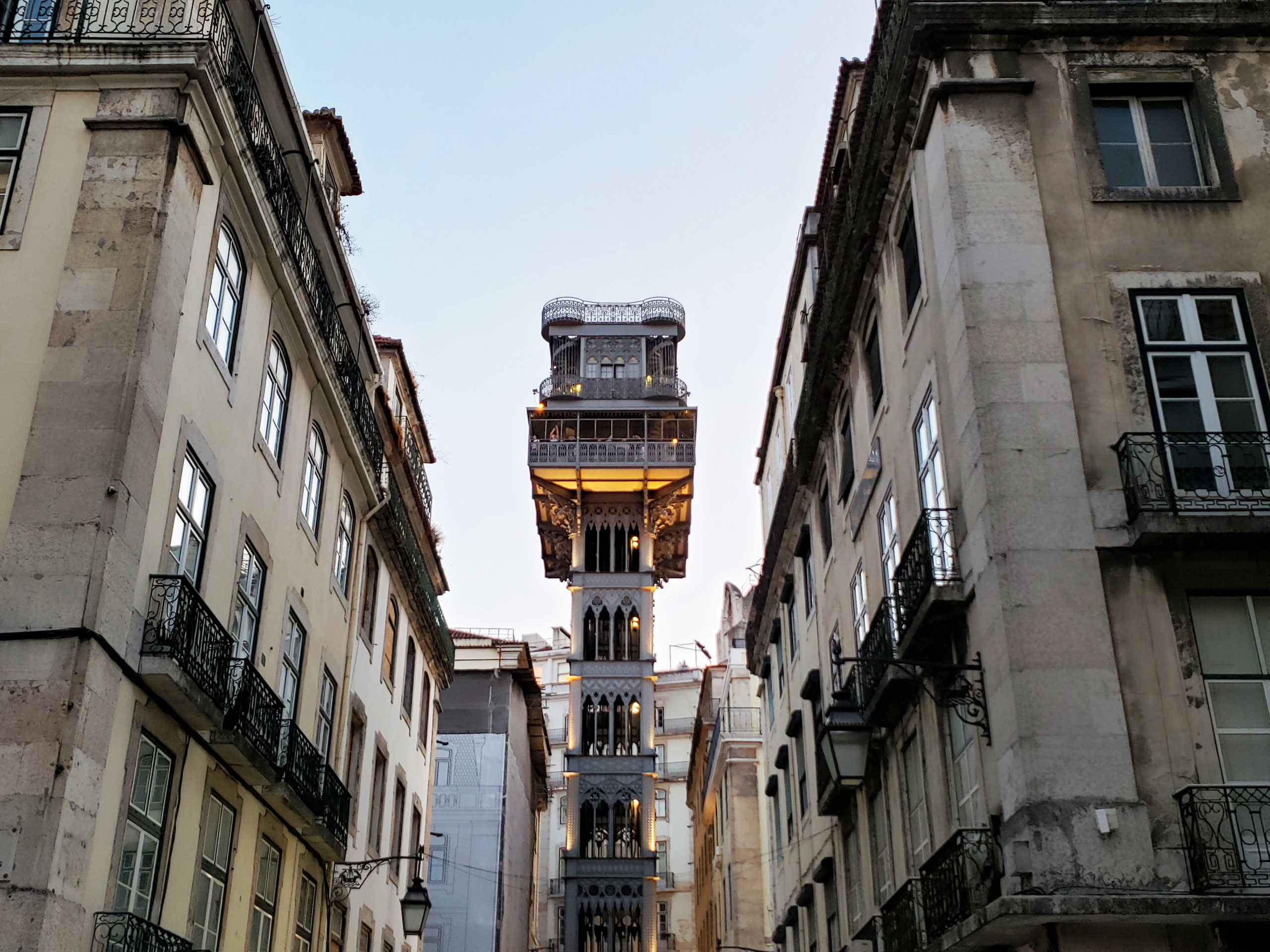
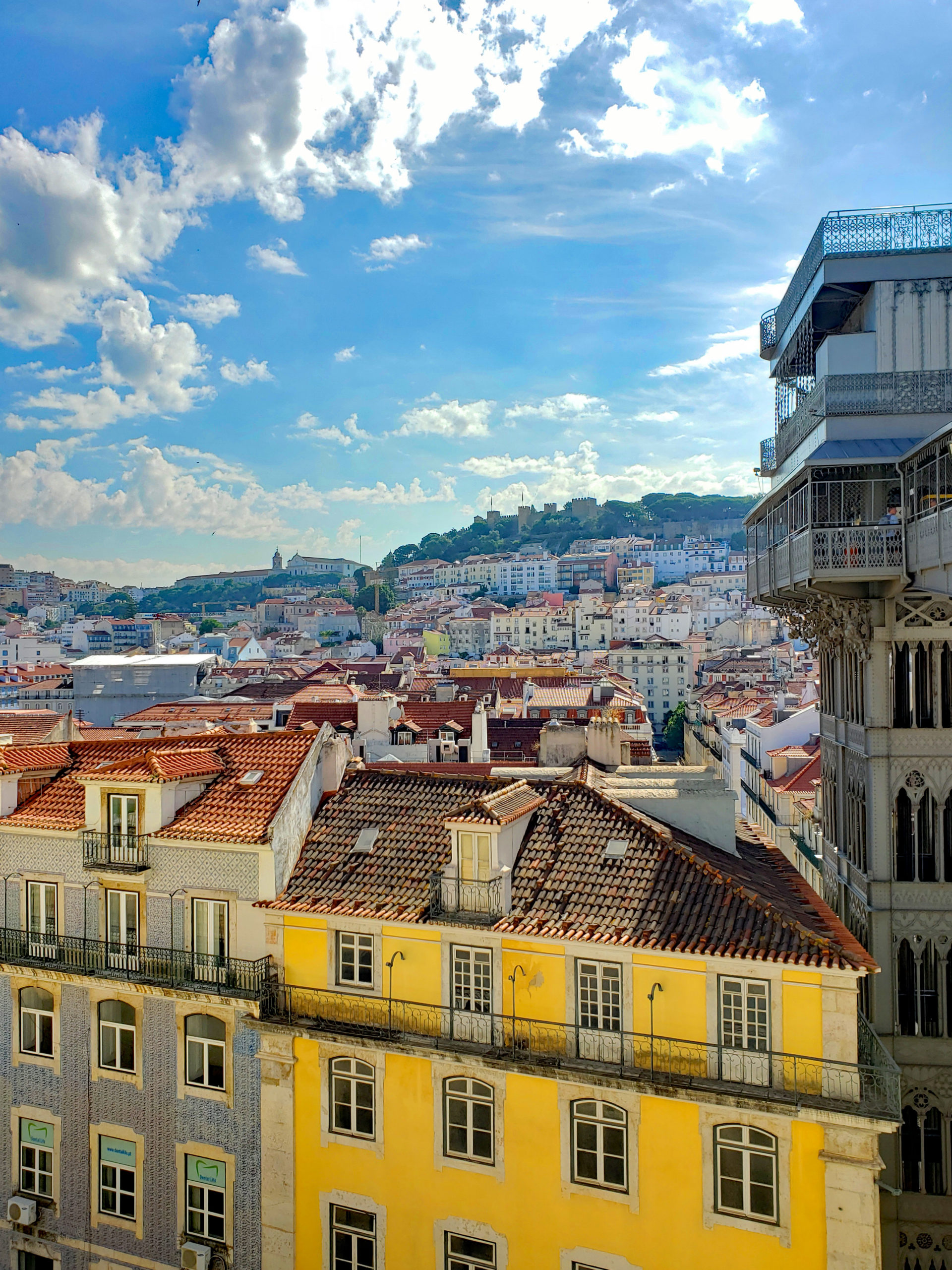
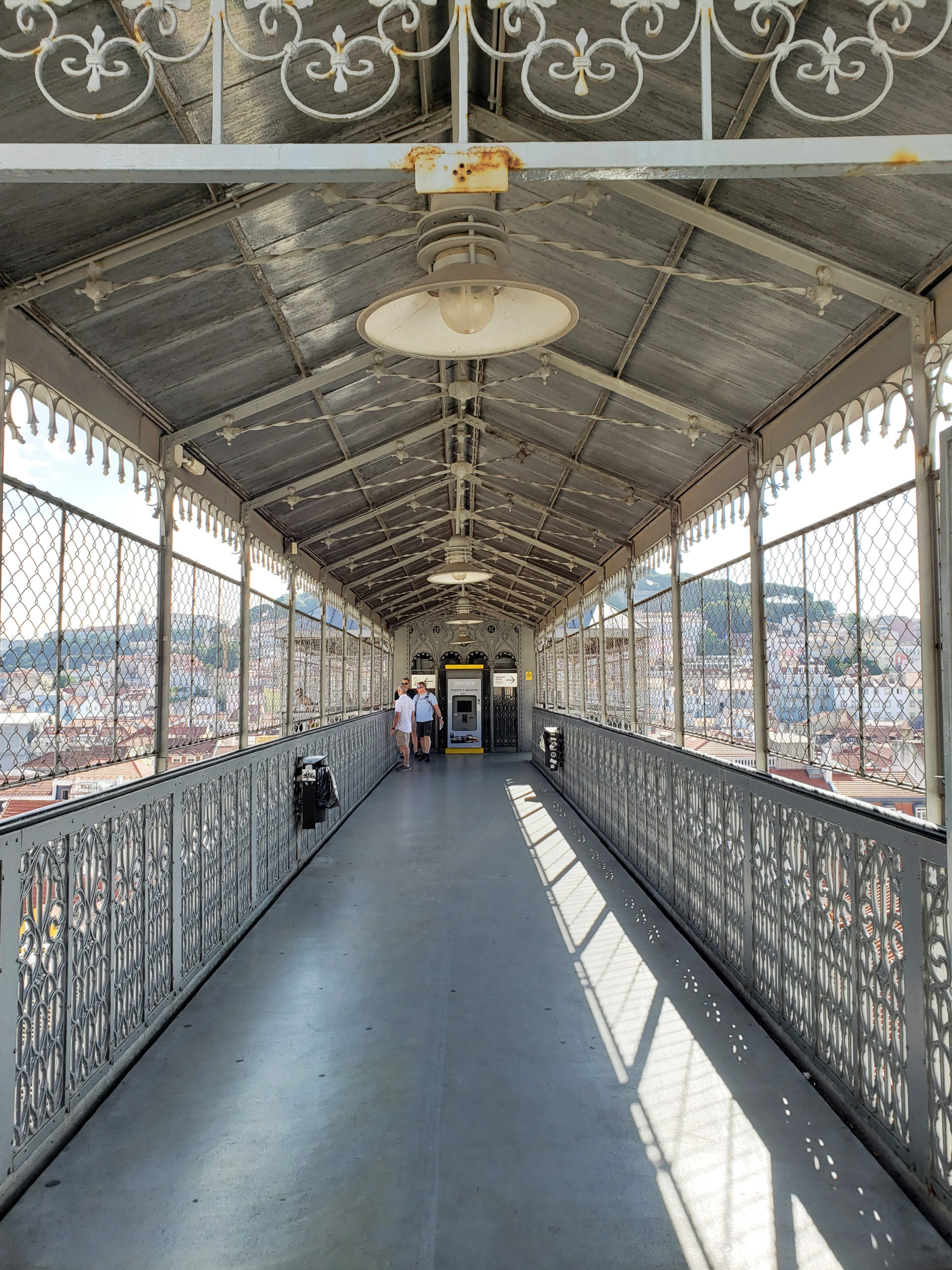
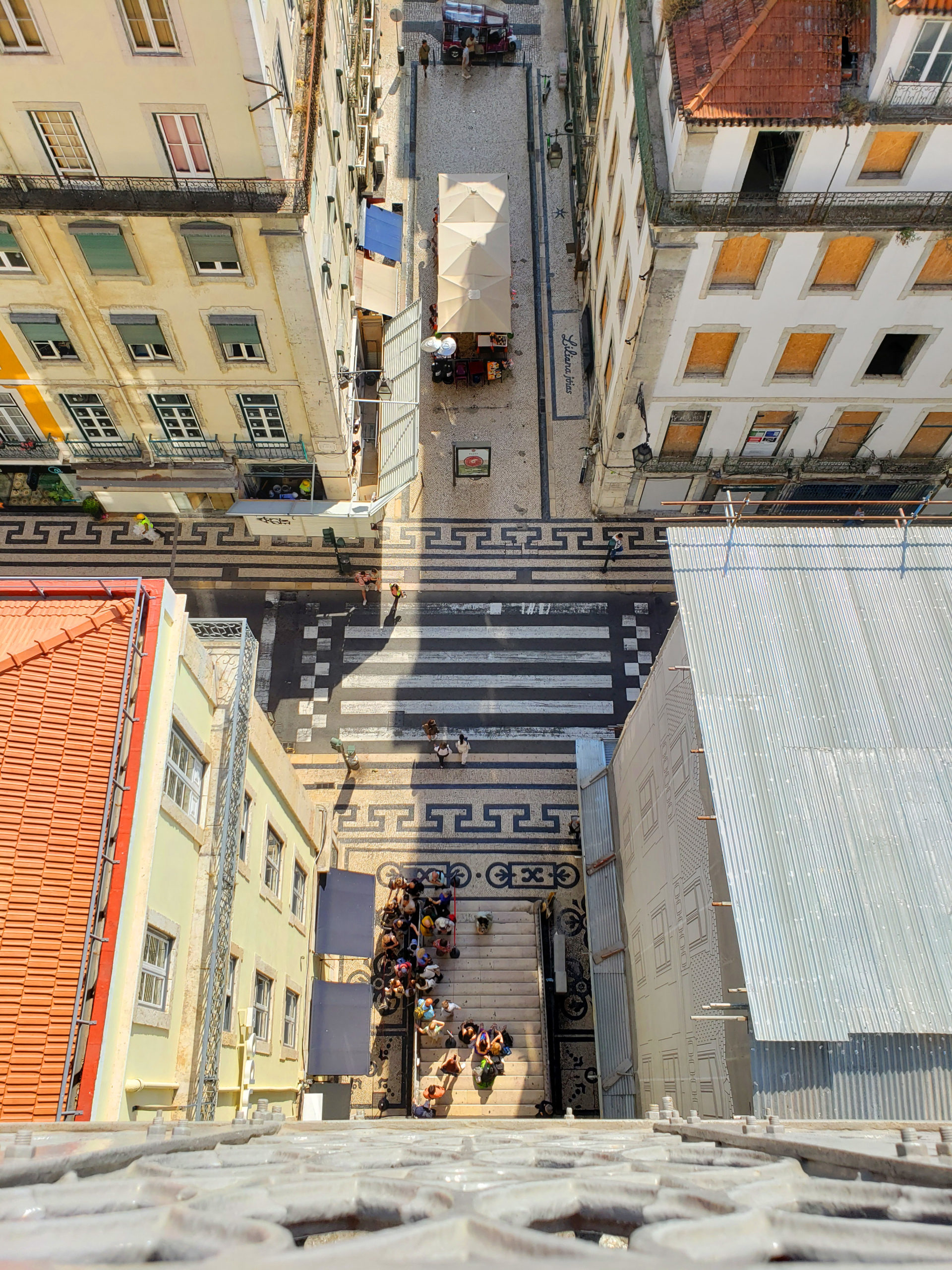

National Tile Museum
The Museu Nacional do Azulejo, or known in English as the National Tile Museum, is an art museum in Lisbon that is solely dedicated to the azulejo, which is the traditional tilework of Portugal and the former Portuguese Empire. This museum is filled to the brim with tiles of all colours and sizes, some of which date back to the 15th century. Some are simple, and decorated with floral patterns and boats, while others are pieced together to create grand murals chronicling people, or historic stories. The museum is also filled with information detailing how azulejos tiles are made. Cost to enter is €5 and I think is worth the visit. I unfortunately did not have time to visit, but there’s always next time, since I became obsessed with azulejos tile during my visit.
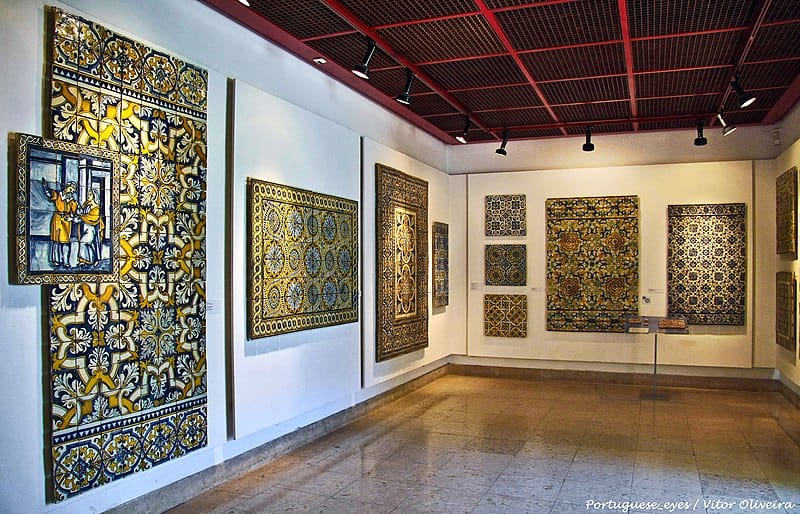 Photo Source
Photo Source
Go On An Azulejos Tile Hunt
Can’t visit the National Tile Museum? Hit up the next best thing and go on an azulejos tile hunt on the streets of Lisbon yourself. One of the most notable aspects of Lisbon’s alluring architecture is its vibrant ceramic tiles that can be found dotted throughout the city in every colour and pattern one can imagine. From signal tiles repeated endlessly along a building’s facade in simple floral patterns, to intricately placed individual designs creating a massive mural along a building, you’ll be without photographic inspiration while walking the streets and giving yourself a little self-guided azulejos tour.



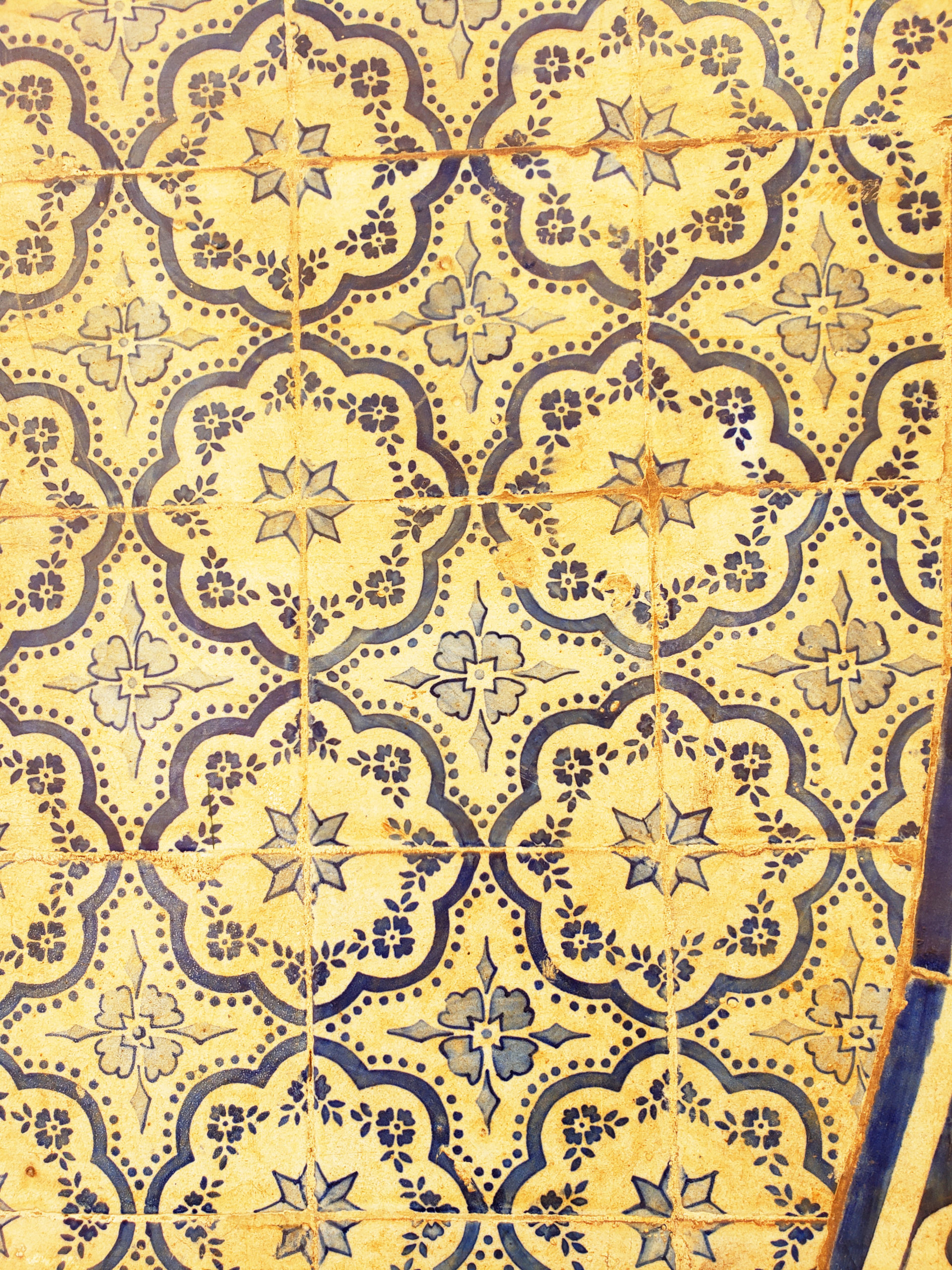
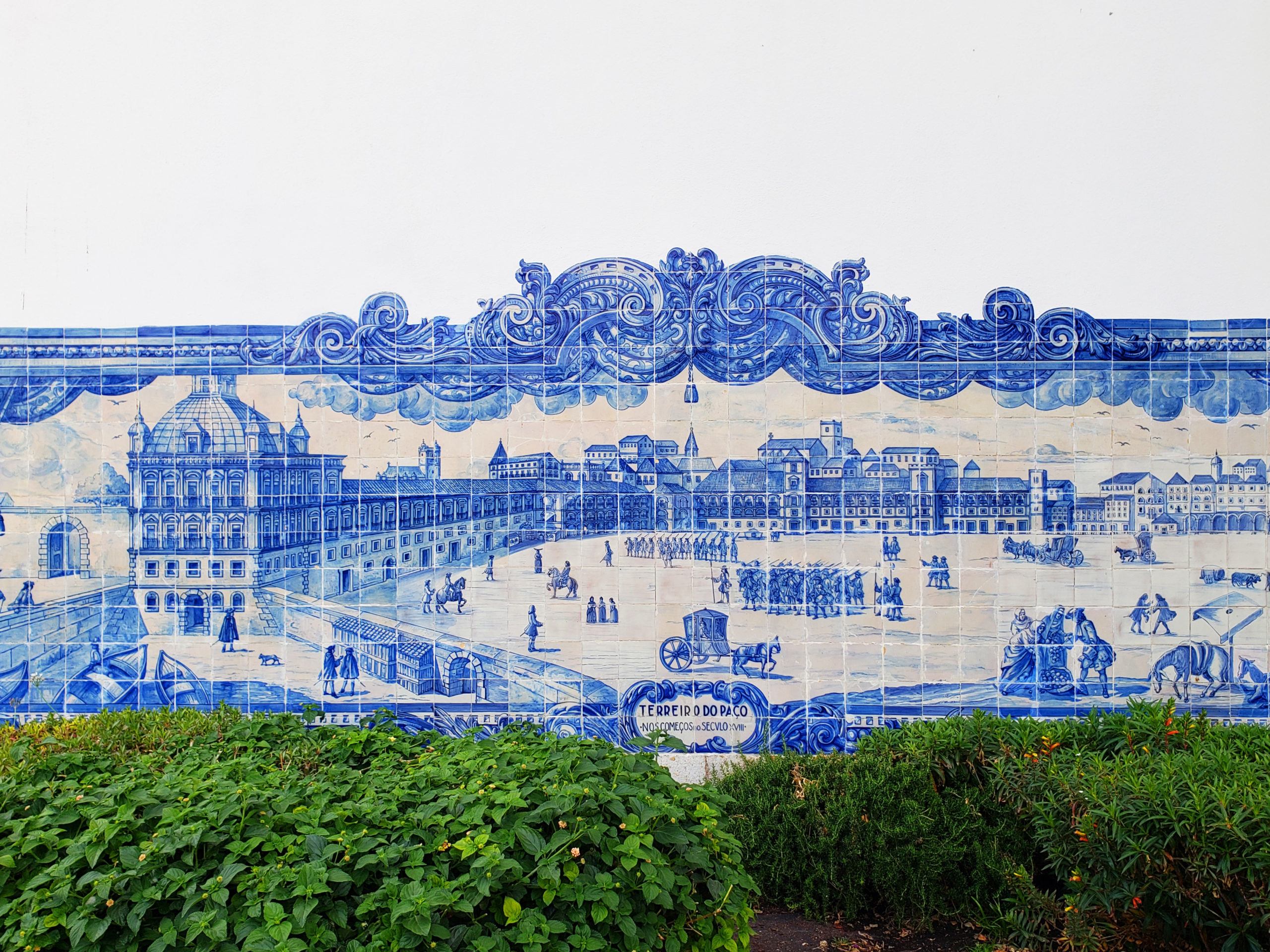

Castelo de São Jorge
Towering high above Lisbon, sits the magnificent Castelo de São Jorge, or St. George’s Castle. This imposing Moorish citadel is one of the city’s most visited and recognizable landmarks. As far back as 200 BC, the Romans established the castle and throughout the years, Castelo de São Jorge saw the North African Moors era, the Christian Crusaders and even saw a failed seige by Castile (Spain) in 1373. Most of what you see today is from the 1930’s restoration and grants visitors with impeccable views over all of Lisbon. After the 1755 earthquake, Castelo de São Jorge remained in ruins until 1938, when António de Oliveira Salazar began renovations and rebuilding the medieval walls. Castelo de São Jorge can be seen from almost all viewpoints in the city. Entrance into the castle is €10, but the lineups, if you aren’t there early, can be unbearable. If you’d rather enjoy the view from the outside and walk along the outer parts, you can do that for free.
 Photo Source
Photo Source
Ascensor da Bica
One of the most iconic and picturesque places to photograph the cute little yellow trams, is located in the Bairro Alto district. The Ascensor da Bica is certainly one of the most popular trams among Instagrammers and social media go-getters. I even saw people making Tik Tok videos in front of it, which was kind of cringey to witness actually. 😉 All jokes aside, it’s easy to see why the Ascensor da Bica is so popular with photographers and tourists. This lift takes you from street level, all the way up one of the steepest streets in Lisbon, to grant you with some pic views and an even more epic experience. Watching people gleefully grin with their heads poking out the sides of the tram video, cell phones in hand snapping photos and taking videos, just proves the popularity with this tram line. For those looking to squeeze onto the tram, a return trip will run you about €3,80 and is only payable in cash.
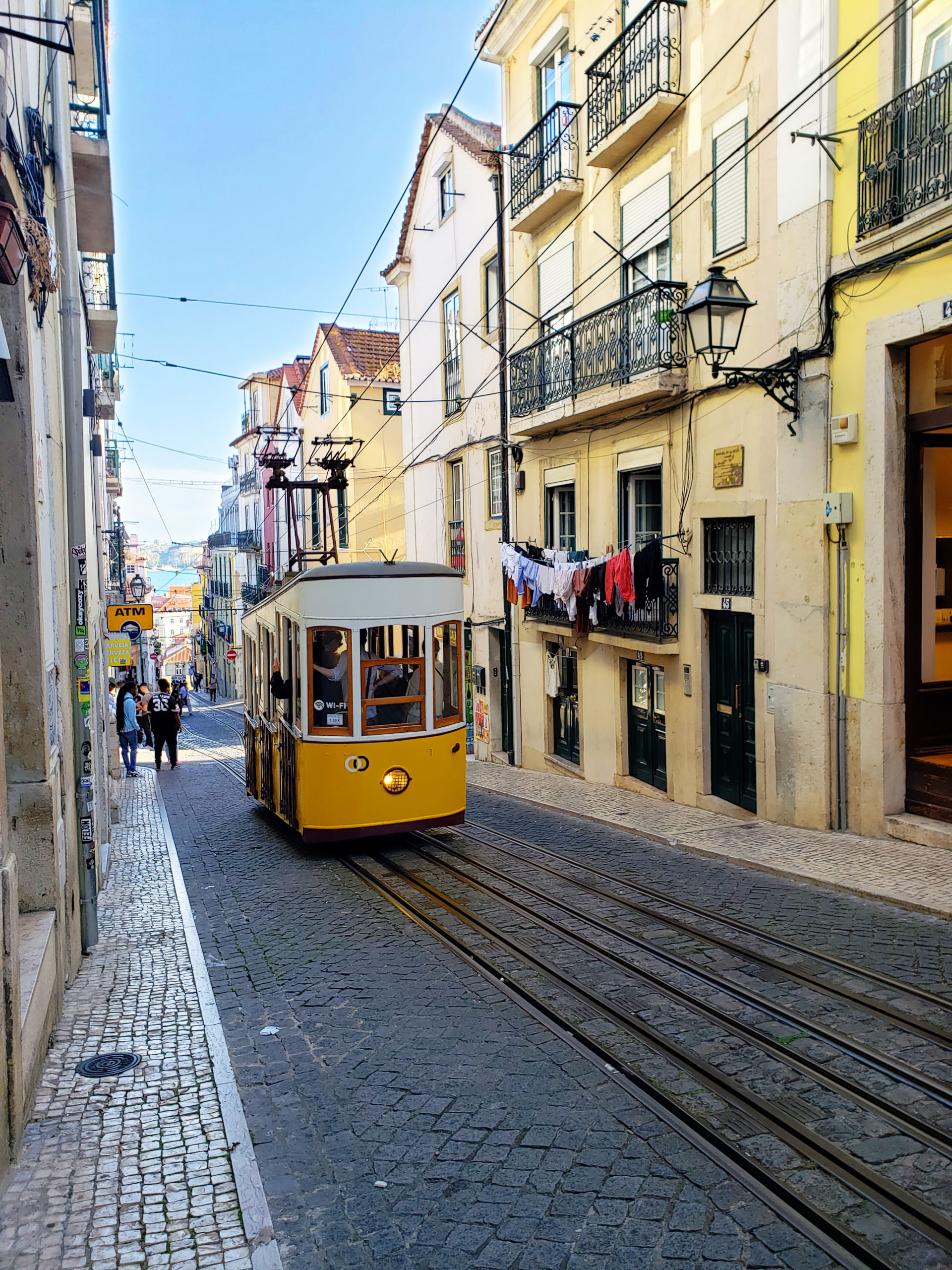

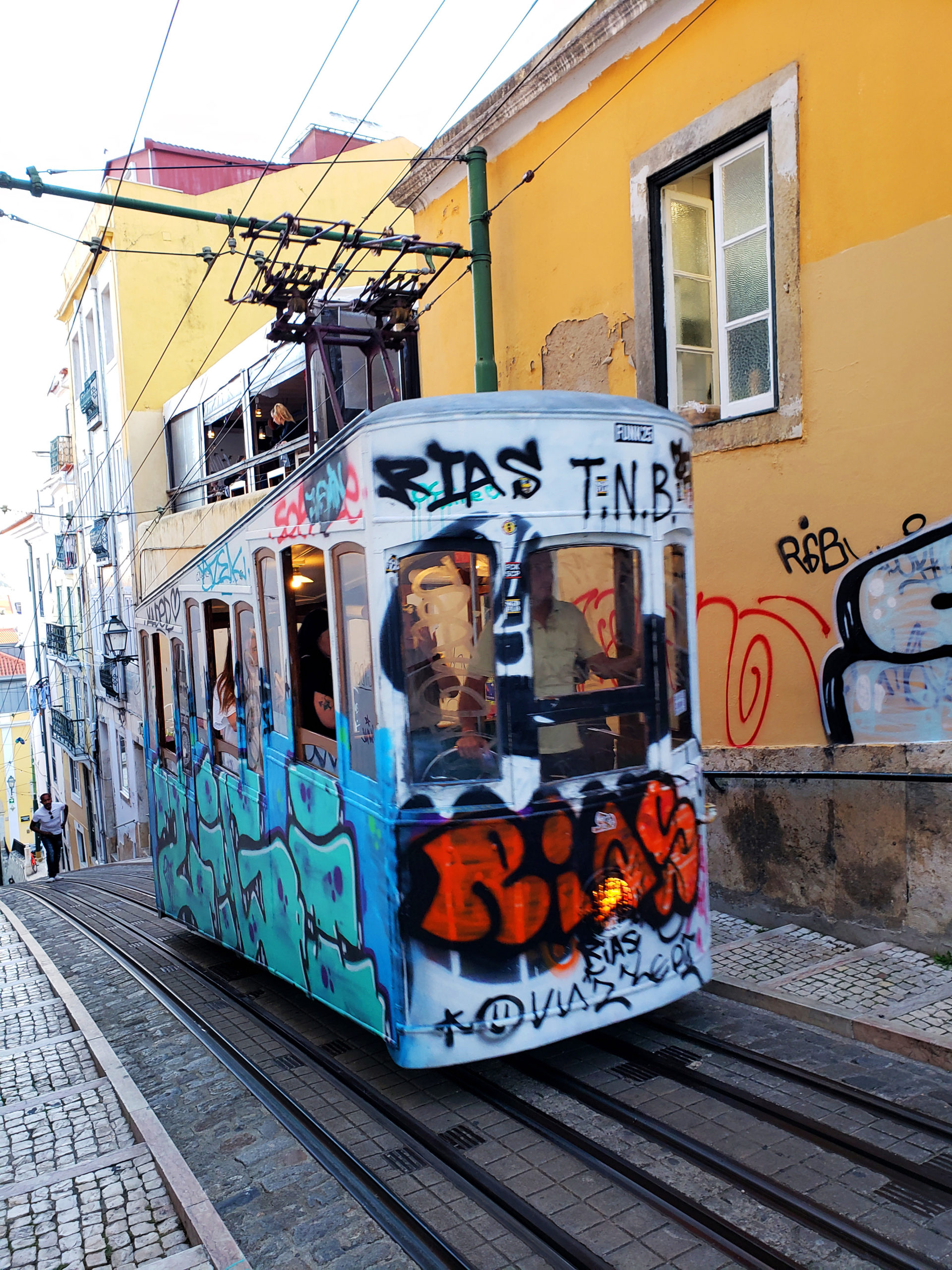

Rossio Square
Notably one of the most picturesque squares in Lisbon, Rossio Square features mesmerizing wavy tiles that are sure to impress you as you walk through. This large square was the heartbeat of Lisbon for nearly six centuries and used to show bullfights, festivals, military parades and gruesome “acts of faith.” The surrounding buildings are now home to upscale shops and restaurants. The stunning wavy tiles were laid out in the mid 19th century and held the nickname, “Rolling Motion Square,” as when you look down, it almost looks as though the ground is flowing. And after a few beers, I’m sure it looks really interesting. 😉 On the north end of Rossio Square, you’ll find the grand Teatro Nacional Dona Maria II, named after Dom Pedro’s daughter. At night time, the square is illuminated and is the perfect spot to people watch.



Visit As Many Miradouros As Possible
If you’re a sucker for a great view, such as myself, then you’ll want to check out as many different viewpoints as possible when visiting Lisbon. The best part of most of these viewpoints is the price tag…free, baby! Unlike going up to Castelo de São Jorge, most, if not all the best and popular viewpoints in Lisbon are no charge. The only cost? Having sore legs after climbing endless hills and stairs, but the views after are worth every step. Some of my favourite miradouros, or viewpoints in Lisbon were, Miradouro das Portas do Sol, Miradouro de Santa Luzia, Miradouro São Pedro de Alcântara.



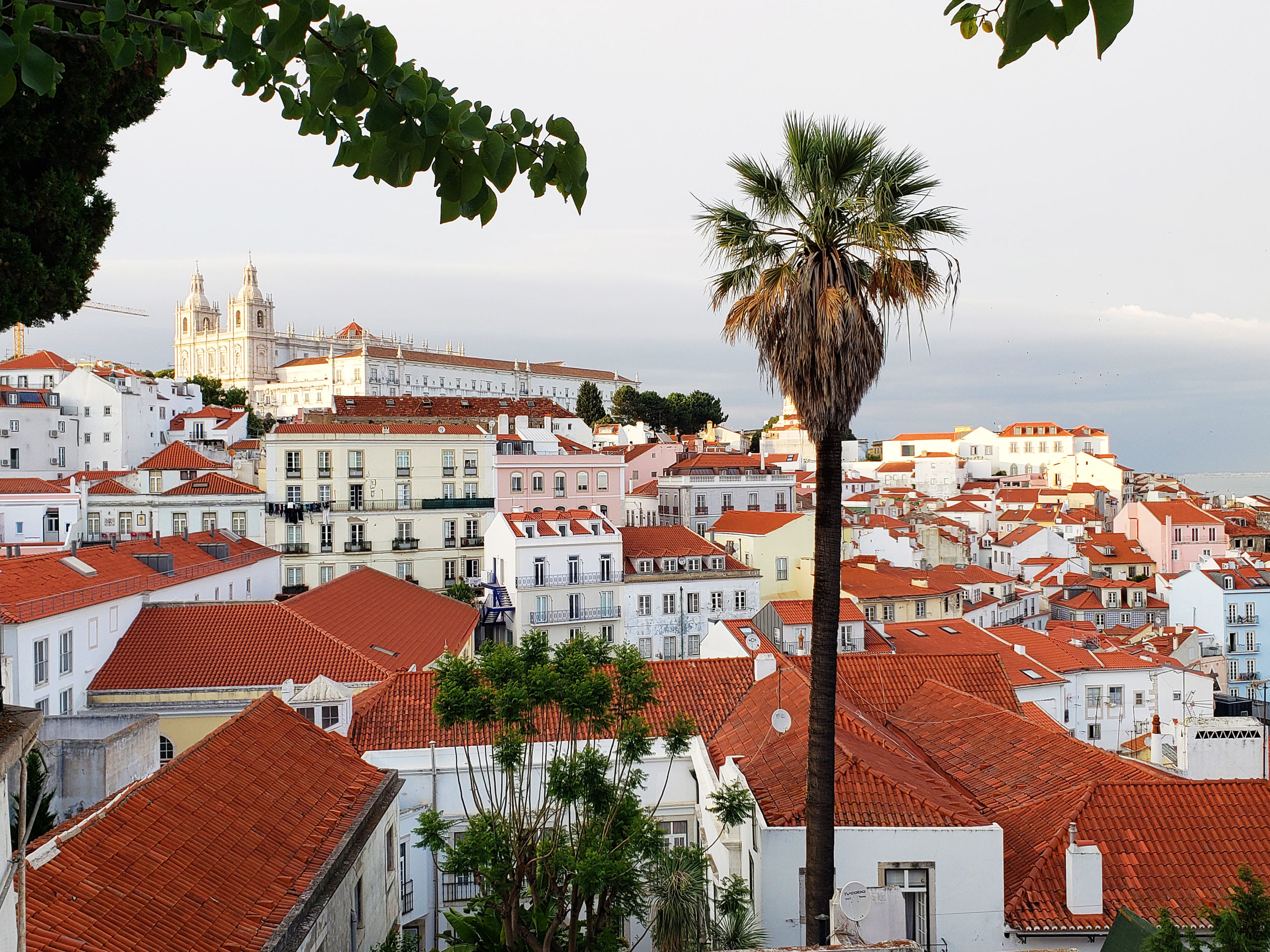
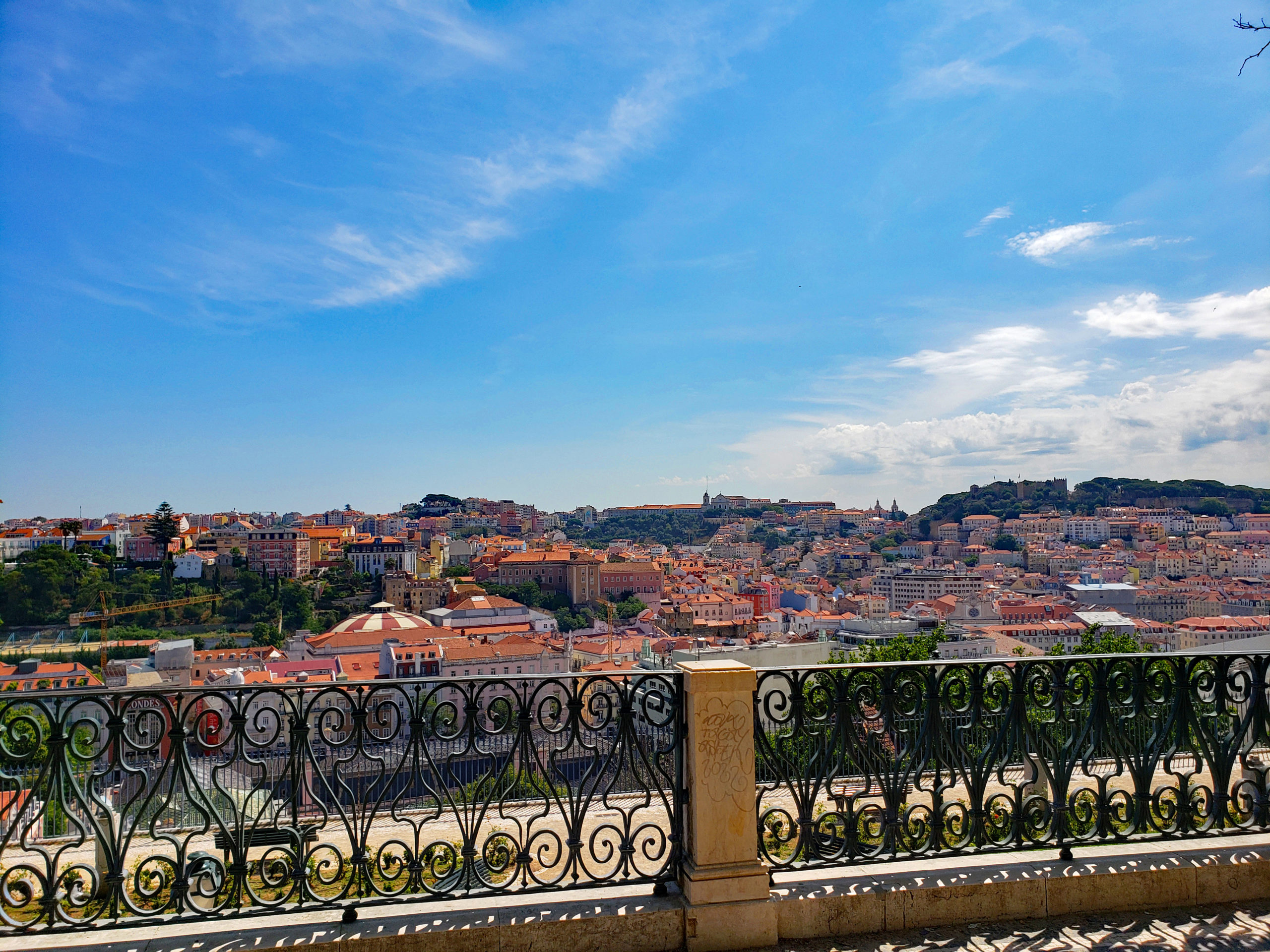
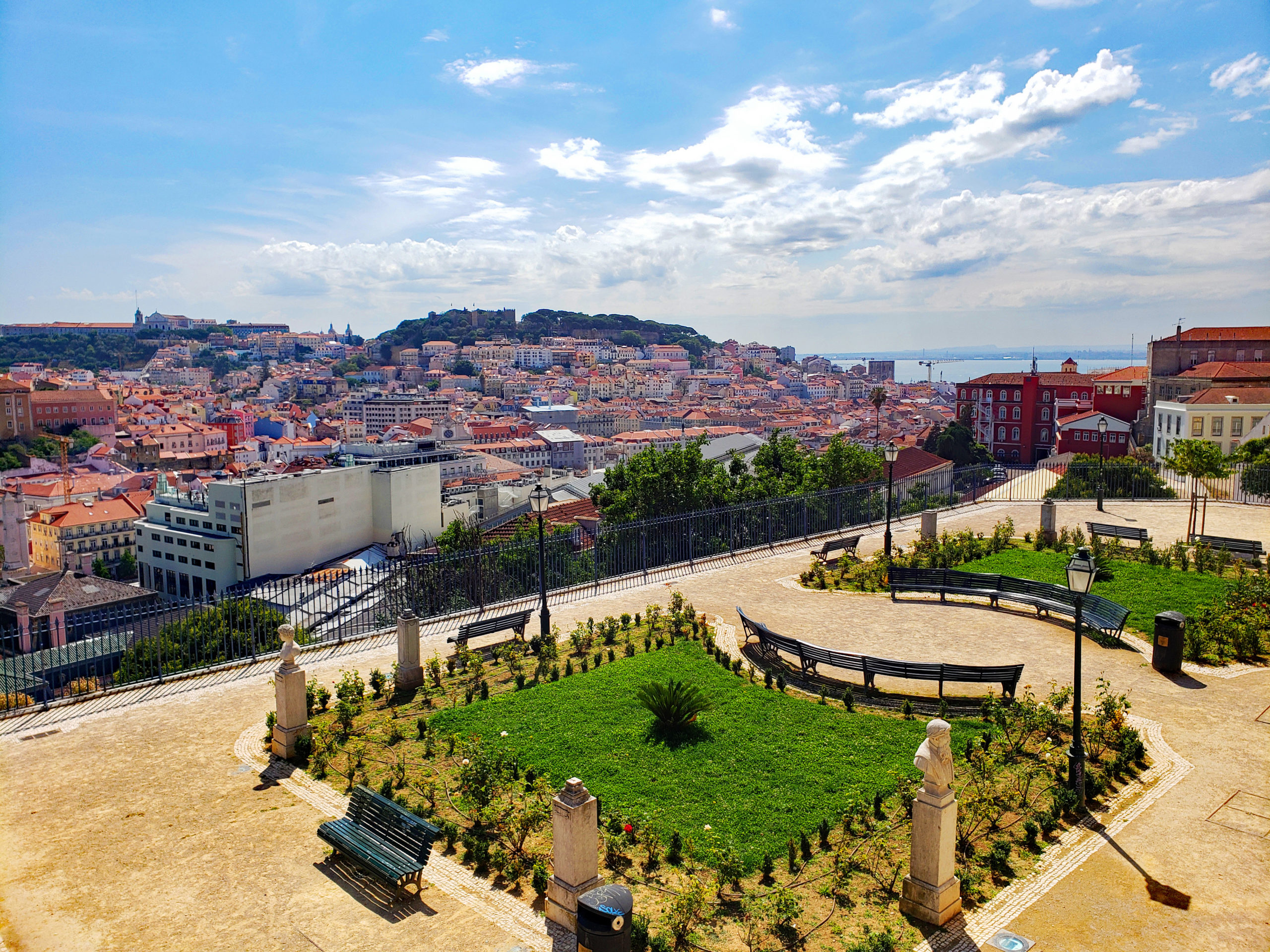
Lisbon Cathedral
The Cathedral of Saint Mary Major, often referred to as Lisbon Cathedral, or simply the Sé, is a Roman Catholic cathedral located in Lisbon. The oldest church in the city, it is the seat of the Patriarchate of Lisbon. Built in the 12th century, the cathedral was devastated by three tremors and almost completely destroyed during the massive 1755 earthquake. Over the years and many renovations, you’ll notice a variety of architectural styles combined to what you see today. The facade still has a very Romanesque look to it, complete with a gorgeous rose window and twin bell towers. The interior of the Sé has intricate stained glass and has Gothic and Baroque details. There is no admission fee to the main area inside the cathedral, however a fee of €2,50 to enter the cloisters is needed. There is also a daily evening mass held in Portuguese at 7pm for those looking to attend.
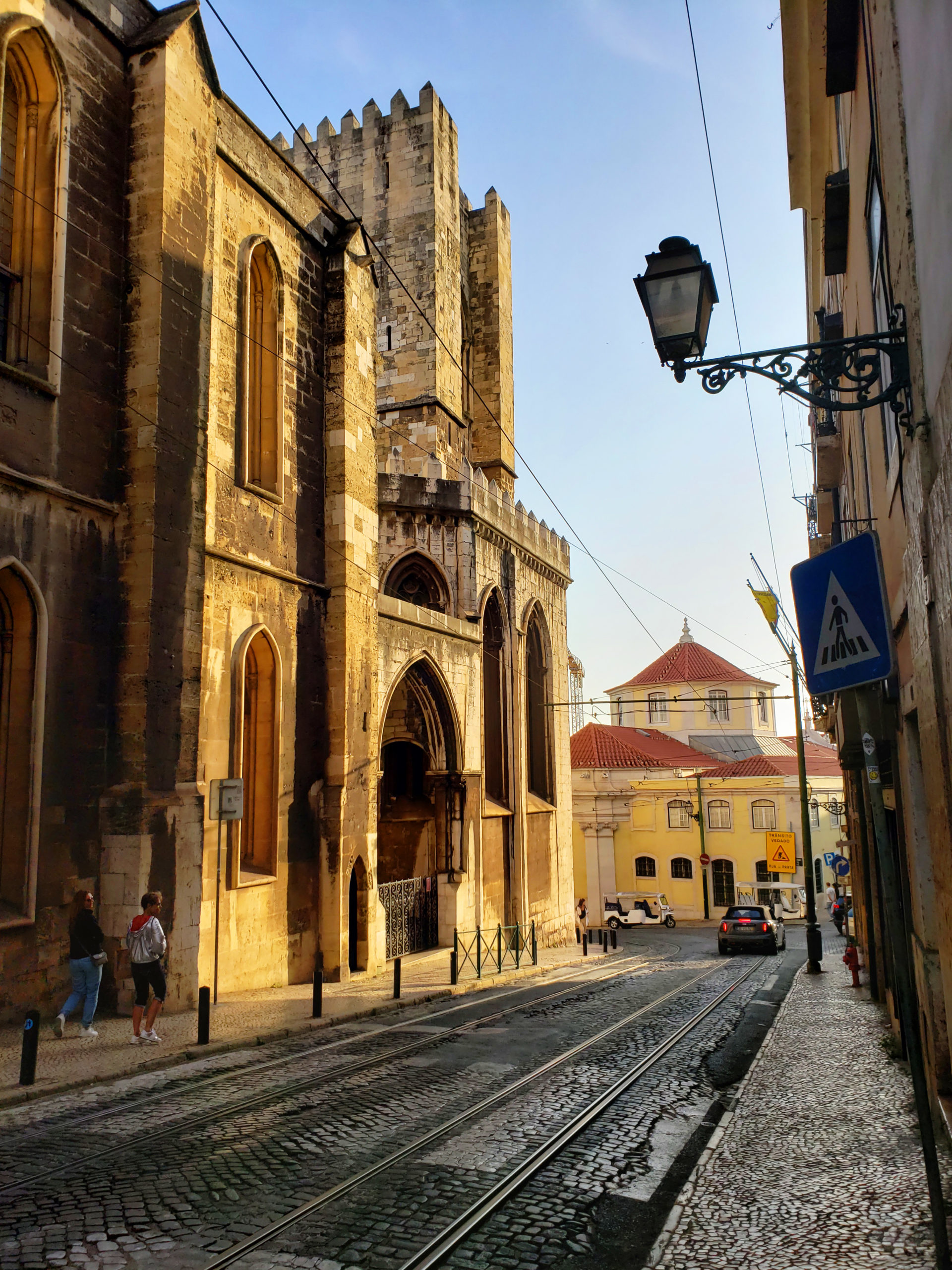

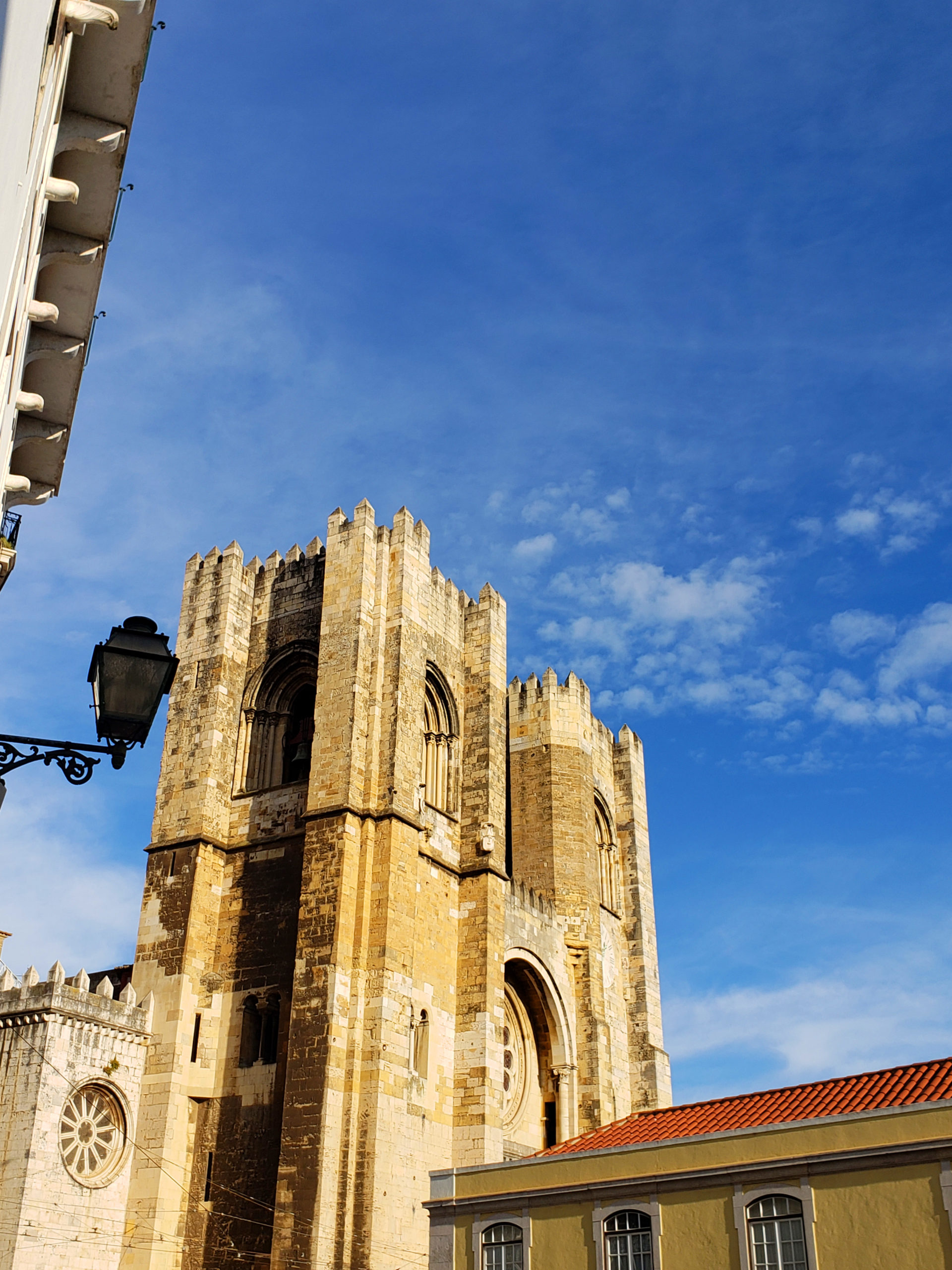
Pastéis de Nata
Fun fact: Did you know that the origin of the Pastel de Nata dates back to before the 18th century, where they were created by monks at the Jerónimos Monastery in the parish of Santa Maria de Belém in Lisbon? At that time, convents and monasteries used large quantities of egg whites for starching clothes. It was quite common for monasteries and convents to use the leftover egg yolks to make cakes and pastries, resulting in the creation of the sweet pastry recipes throughout the country, including the famous Pastel de Nata that everyone wants to get their hands on during their visit to Lisbon and all of Portugal, really.


Time Out Market – Worth The Visit?
Lisbon’s historic Mercado da Ribeira opened in 1930 and served as the main vegetable and fruit market in Lisbon ever since. It 2014, the market was redone to incorporate dozens of top tier food and drink venues (typically the best of the best) and dubbed the first Time Out Market in the world. This place gets busy. So busy that you may not find a spot to sit down and eat at many of the sit down benches and tables lining the interior. Time Out Group is a British media and hospitality company that is famous for their online and physical presence in the social, lifestyle, food and culture scene. Lisbon’s Time Out market is not cheap and many have said it is over-hyped and better food can be found elsewhere for less cost. I didn’t end up going there for that reason. I’d say skip this one.
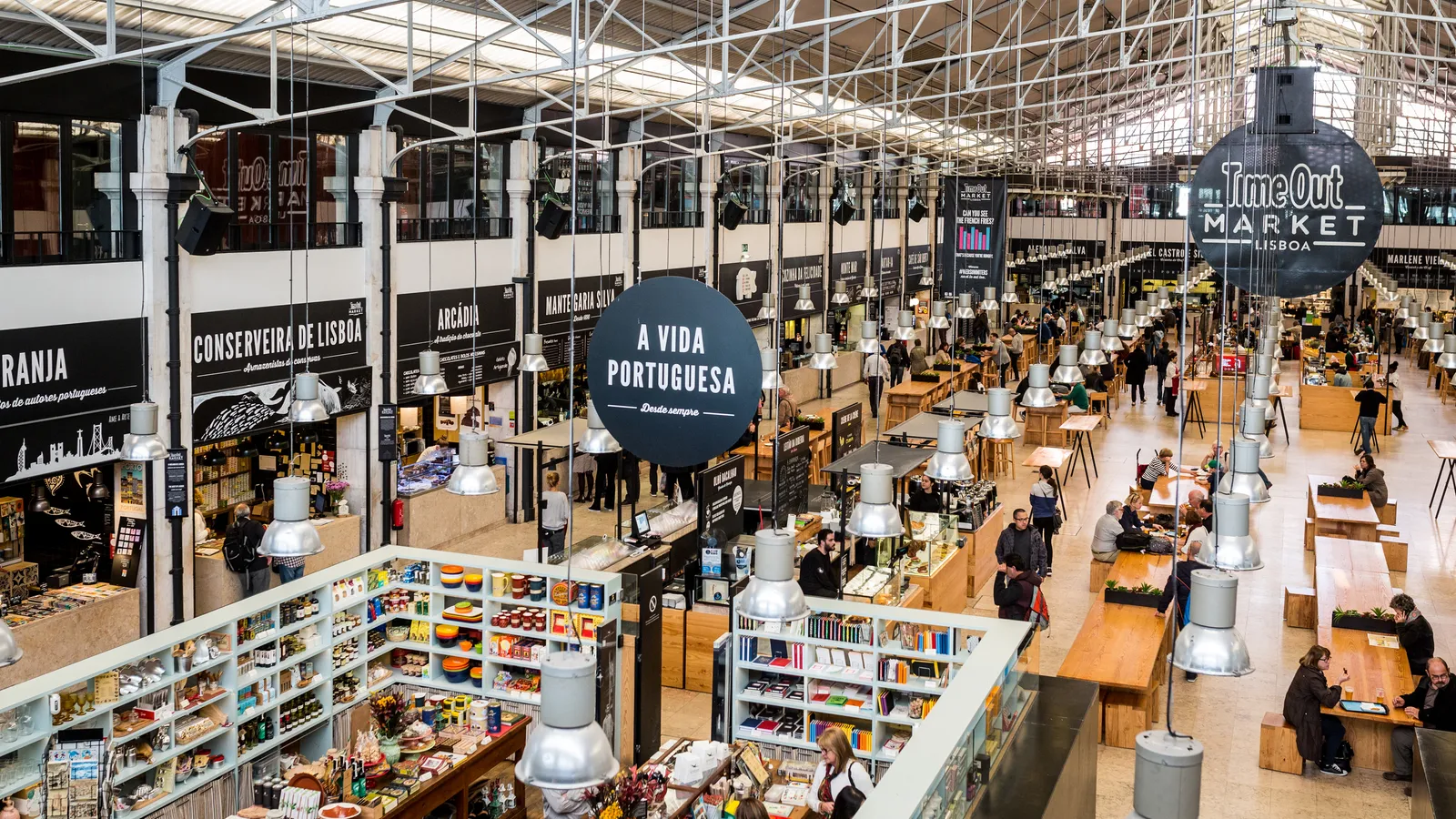 Photo Source
Photo Source
Lisbon Waterfront Promenade – Tagus River
Feel like sitting at what seems like the ultimate waterfront promenade? Well, Lisbon’s Tagus River is the place to be. Located at the very end of the Praça do Comércio, you find locals and tourists basking in the sun, watching street performers or simply watching the plethora of boats gliding by along the water. Pop a seat down on the wide stone stairs at the river’s edge and enjoy the views.

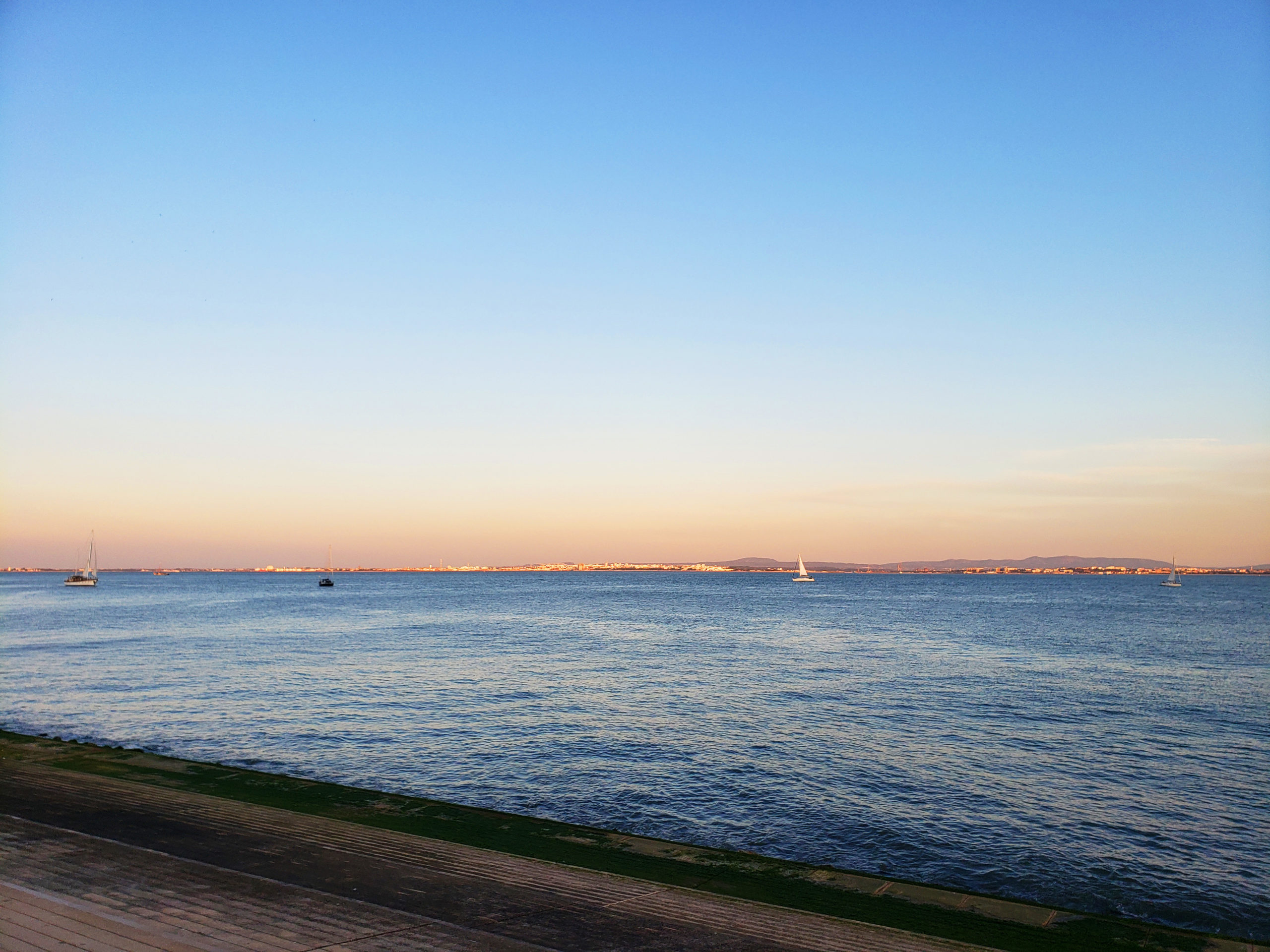
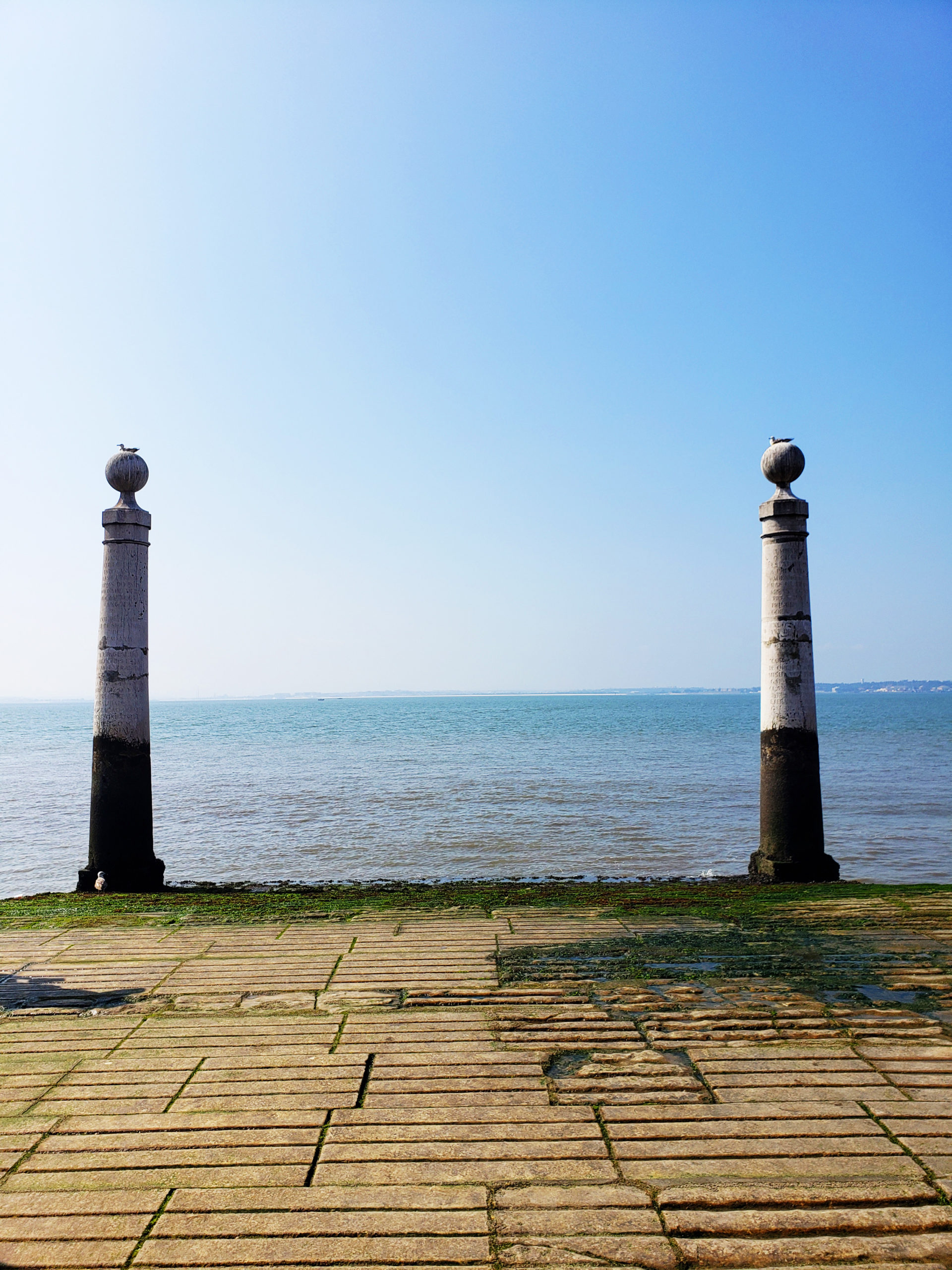
Pink Street (Rua Nova do Carvalho)
Commonly known by many tourists as Pink Street, this bright and cheery looking area was once the seediest part of Lisbon. Rua Nova do Carvalho is located in the Cais do Sodré District and for a long time, this neighbourhood was one of the disadvantaged neighbourhoods in Lisbon and a place for bustling brothels, drunken sailors and ummm, “ladies of the night”. In 2011, Rua Nova do Carvalho was given a Barbie-esque makeover and painted a bright and inviting pink, which turned it into a major Instagram photo spot and dubbed as Pink Street since then. The street is repainted every so often to keep the vibrancy because so many people walk up and down that it does wear the paint off eventually. It’s nothing too special. It’s literally just a pink painted street filled with bars and clubs, but it does make for a cool photo spot.
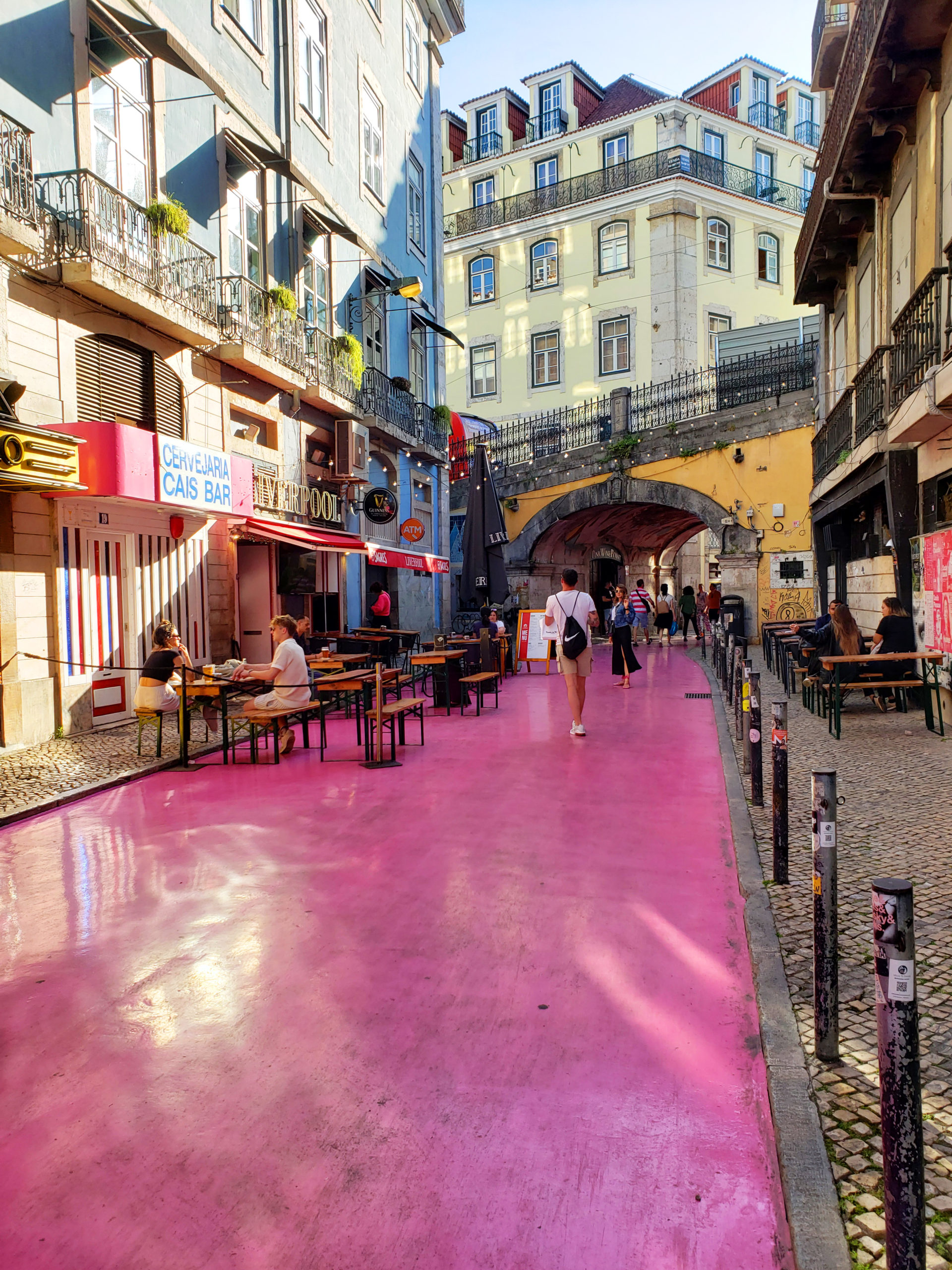


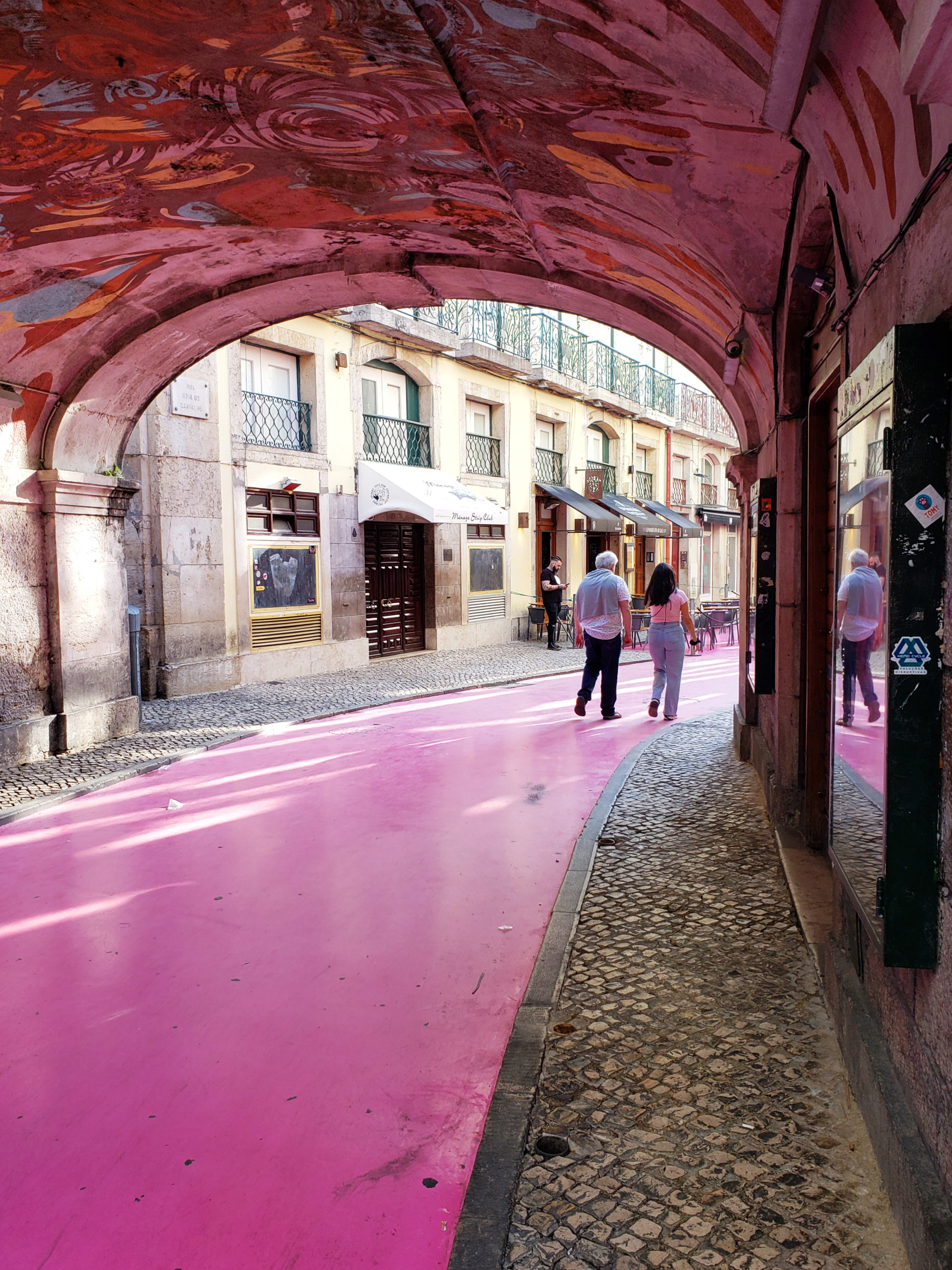
Where To Eat
Whether you’re looking to dine in a Michelin Star restaurant, or chow down on some hot and hearty street food like the locals do, Lisbon is the place to visit for foodies of all kind. Into cozy little eateries? Yup, Lisbon has that. Want a 5 star meal with 5 star prices? Yes, Lisboa’s got it! Quick, cheap bites that won’t break the bank? You guessed it…Lisbon has it! Here is just a short list of the places I went that I absolutely loved.
Trobadores – Channel your inner Ragnar Lothbrok (only Vikings fans will know this reference) and treat yourself to a Medieval night out at this Viking inspired restaurant in the heart of Lisbon’s Baixa District. This was one restaurant that I was most excited to visit during my trip and from the moment I stepped into the darken wooden ambiance off the bustling streets, I was in love immediately. As I took my seat at the solid wooden table, on a wooden chair, my waitress greeted me with a smile and was dressed in full Medieval attire, which made the setting seem so much cooler. Make sure to try their in house beer, honey mead and a few different appetizers from the wooden trolley that the waitresses bring over, if you want to try a few different dishes.
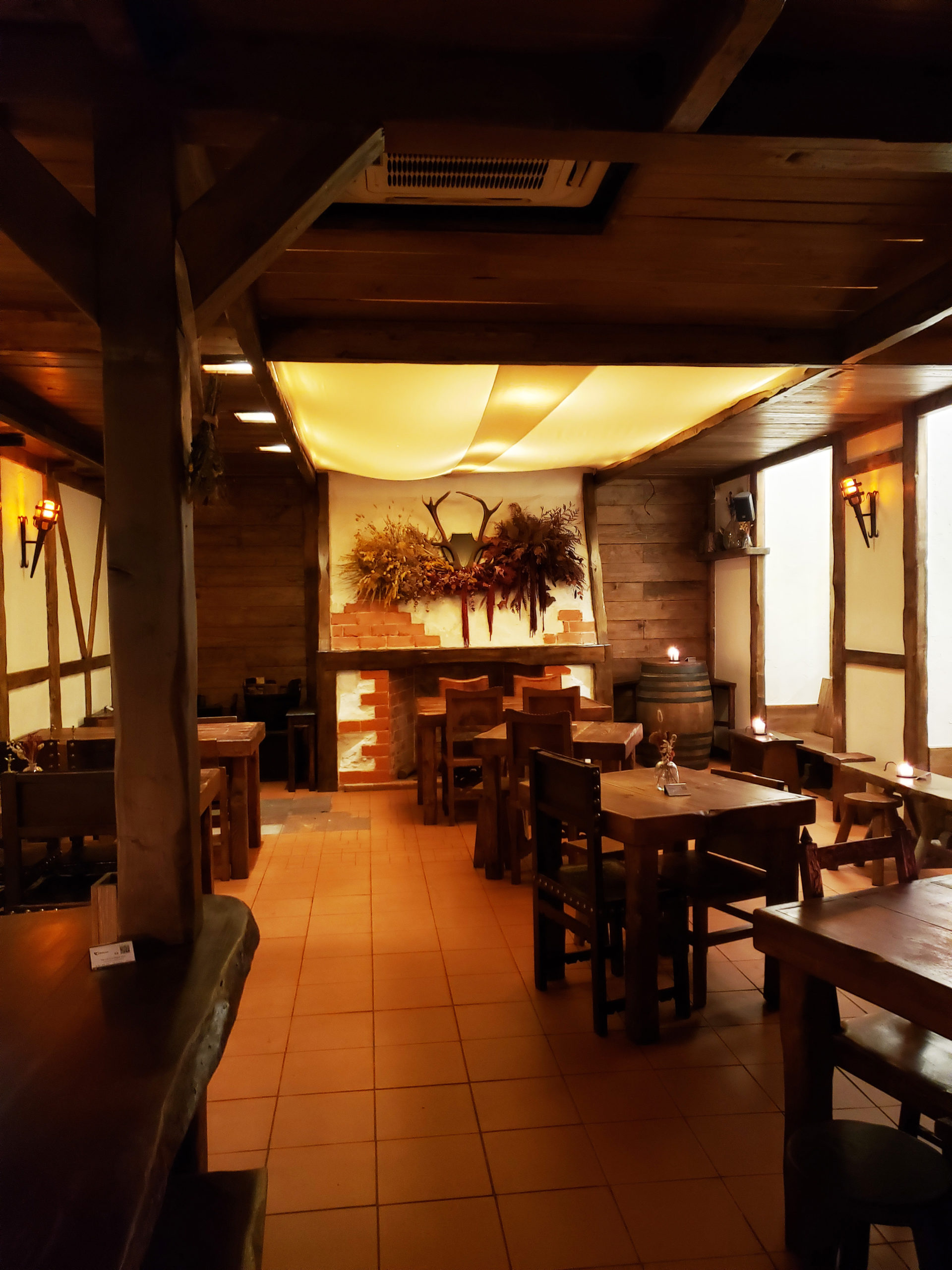

Cafe Martinho Da Arcada – Noted as the oldest café in Lisbon, Café Martinho da Arcada was established in 1782 and sits at the idyllic corner of the Arch in Praça do Comércio. A beautiful mixture of class and history, this café is a tourist attraction in itself, however still a must visit if you ask me. Martinho da Arcada is worldwide famous as the favorite café of the Portuguese poet, Fernando Pessoa. According to written sources, Pessoa chose to meet friends and enjoy his coffee at Martinho da Arcada until a few days before his death in 1935. Their tiramisu and coffee are to die for and to sit under the famous arcade to do some serious people watching, is the best way to kill an hour after walking throughout the city and revel in the historic ambiance.
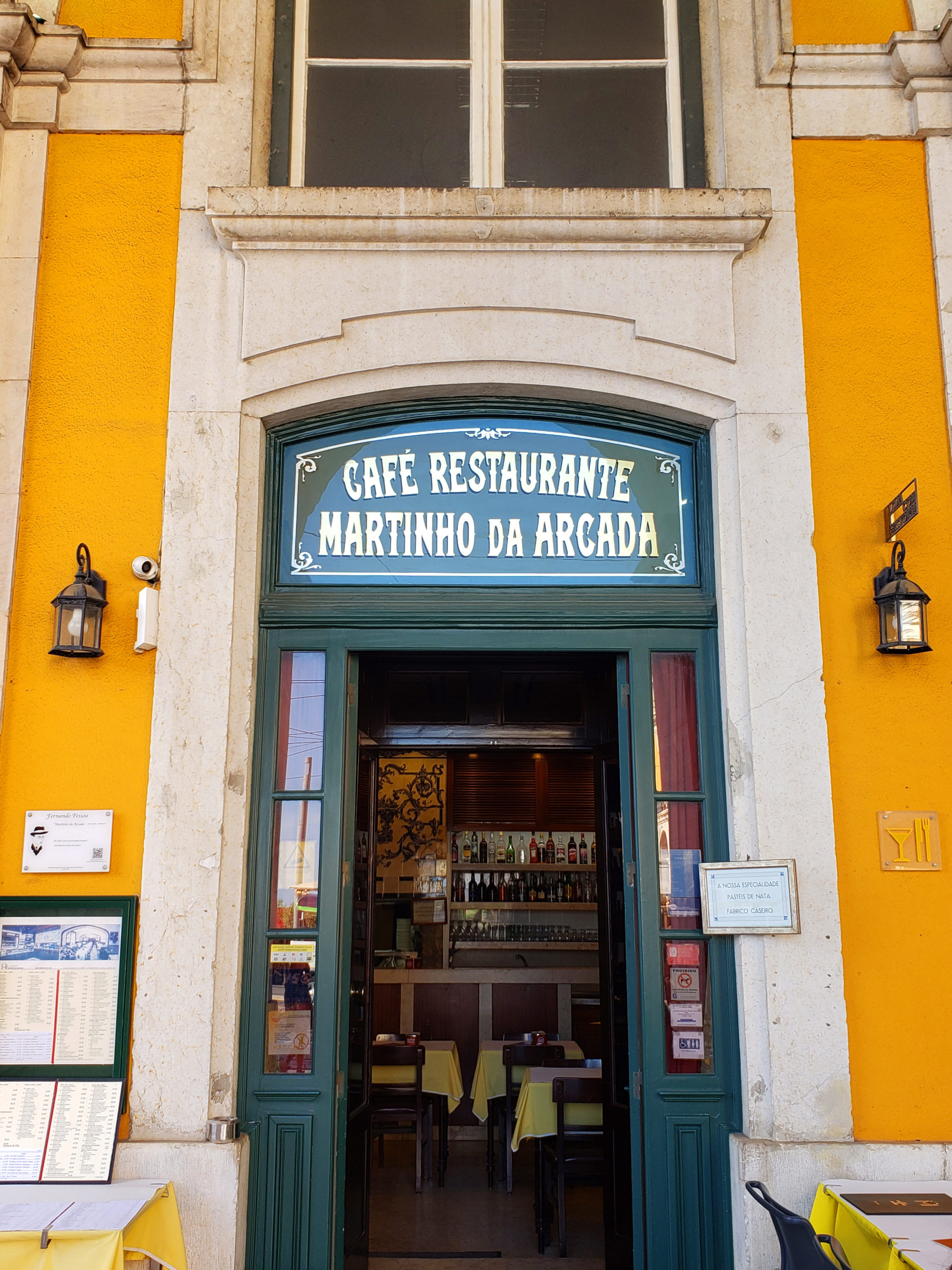

O Prego – If you’re a sandwich lover, then you need to visit O Prego! The prego, Portugal’s beloved sandwich, features thinly cut, tender beef inside a soft white bun. It’s a meat lover’s dream. Simple, yet delicious, the prego may seem ordinary, but a good prego (steak sandwich) can be an absolute treat when you’re hungry, don’t have much time or don’t want to spend a fortune in a steak house in Lisbon. O Prego is a small, intimate restaurant, so make sure to make a reso, or come early.
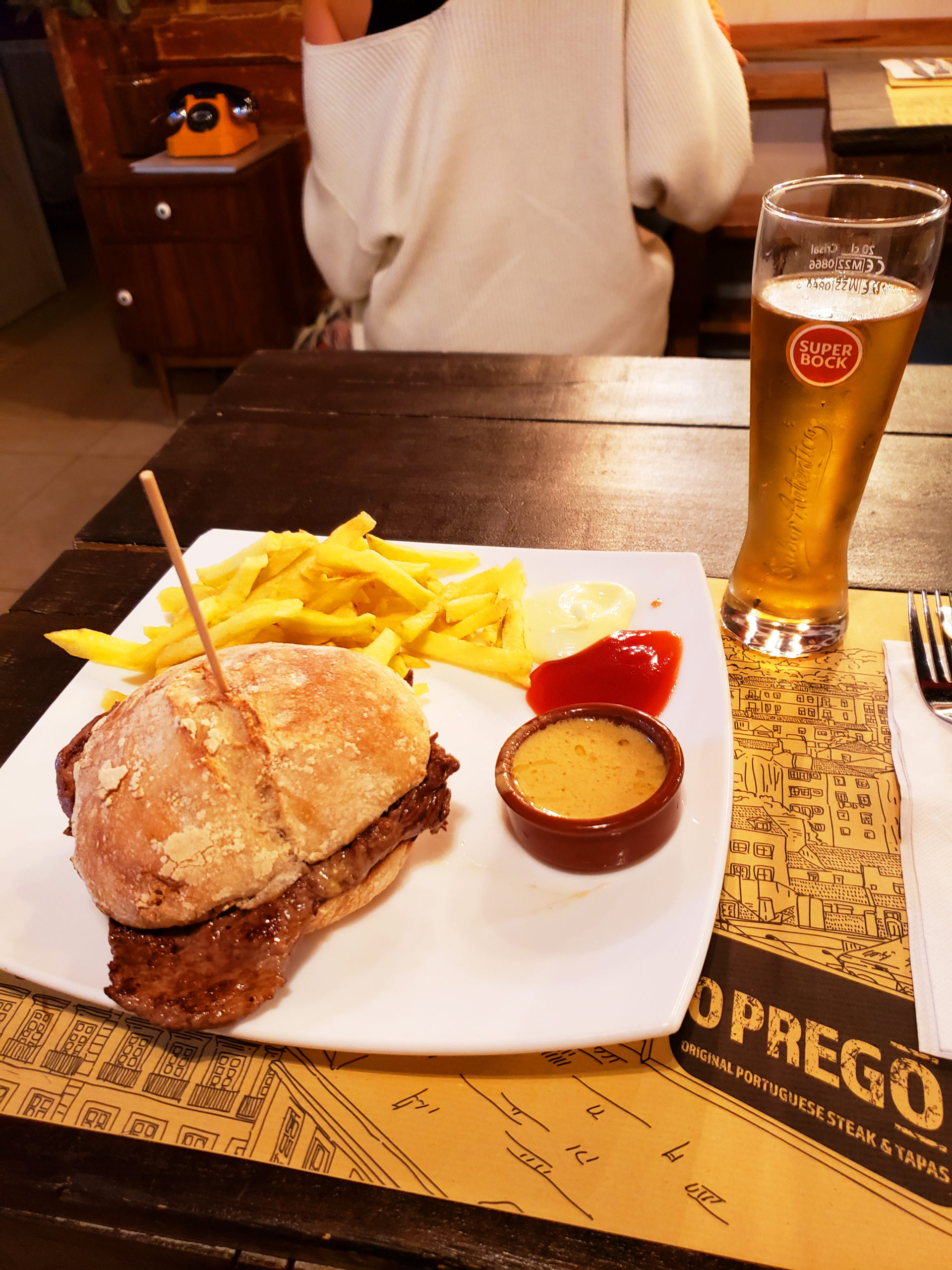
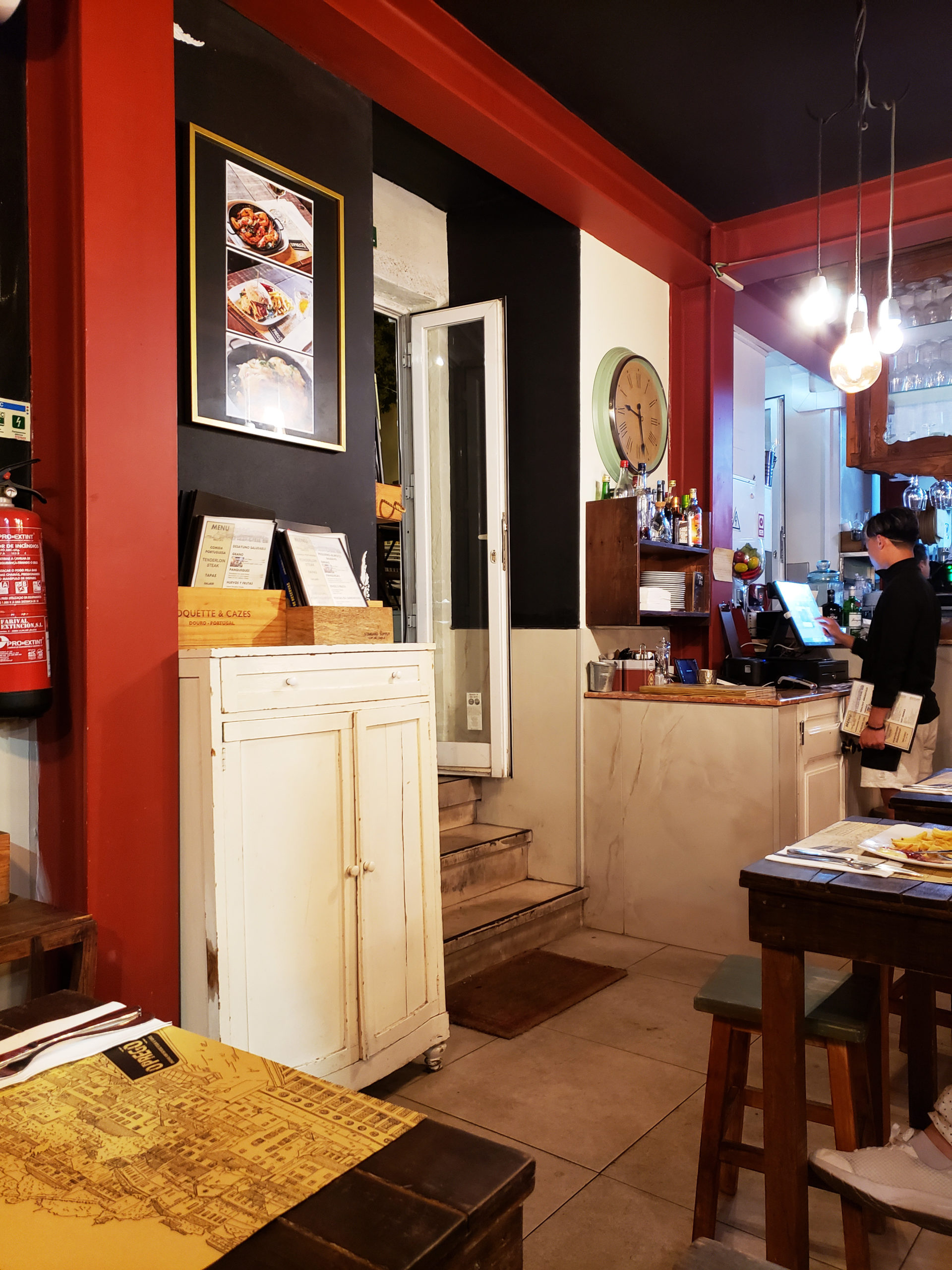
As bifanas do Afonso – Another day, another sandwich. Can you tell the Portuguese have a favourite type of food? 🙂 Get in line for one of Lisbon’s most delicious and most popular cheap eats, the famous bifana! Bay leaf, garlic and white wine are the key ingredients that take this simple pork sandwich from simple street food, straight to Flavourtown! While walking towards this famous Lisbon sandwich joint, I could smell the porky goodness wafting down the road. My nose lead me in the right direction and as soon as I saw the massive lineup, I knew I was in the right place. The line moves fast and with standing room outside along the edge of the walls, do as the locals do and order up a cold beer and douse your bifana in some mustard and hot oil for the ultimate experience. Cheap and delicious… my favourite combo!


Allfama Portuguese Cuisine – As soon as I stepped out of the train station after arriving from the airport, this was my first port of call to grab some much needed food after a long travel day. The short walk from the station was deceiving, as it is all up hill, but worth the walk once you take your first sip of an ice cold beer here. The service was incredible and although the menu portions are small, it was just enough for a first taste of Lisbon. I ordered up some Pastel de Bacalhau (codfish patties) and delicious beef croquettes with caramelized red onions and potatoes.


Jamonaria Pata Negra – Attention all charcuterie enthusiasts… have I got the spot for you! Right in the heart of Lisbon, down near the waterfront, you’ll find this little gem tucked onto the corner serving up delectable Spanish stye cheese and jambon, cut so perfectly paper thin, it’ll melt right in your mouth. Served with bread and what I think was pumpkin jam, it’s the ultimate combination for those looking to have a small snack before a larger meal later on.
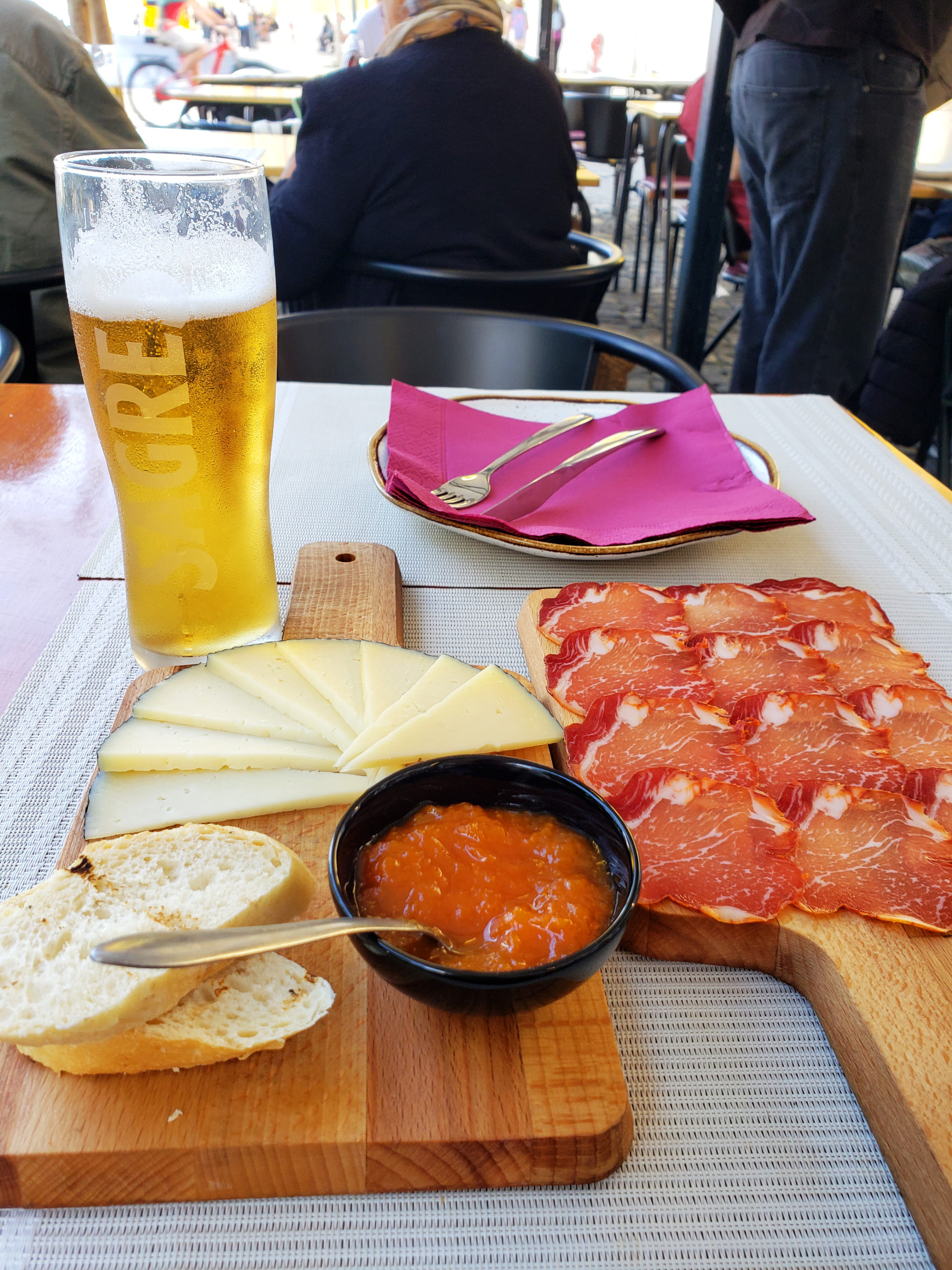
A Ginjinha – Have a drink steeped in history at A Ginjinha, a local hole in the wall establishment serving up this sweet, yet powerful cherry-like liqueur since 1840. The same family has been running this bar for the last five, yes five, generations, making it all more special. Located right off the Rossio Plaza, you’re bound to find a group of people gathering around, sipping their Ginjinha and chatting the afternoon away. It’s been known that the locals have at least 5 shots in Ginjinha a day, so I’ve overheard from a local tour guide, as I was eavesdropping on her group’s tour. 😉



Estrela da Bica – Located right on the corner of a small street lining the tracks of the Ascensor da Bica, you’ll find this trendy little restaurant. I like to refer to the patio as shabby-chic, as the tables and chairs are situated on a slanted hill, which sometimes feel like you’re about to tip backwards and look like they’ve been salvaged from an old antique shop. Aside from the rickety outdoor seating, you’ll be granted unprecedented views of Lisbon’s most famous yellow funicular gliding up and down the hill in front of you. The menu boasts some intriguing flavour combos like shrimp toasts with hot chili oil, plates of pickled veggies and clams with herb butter.
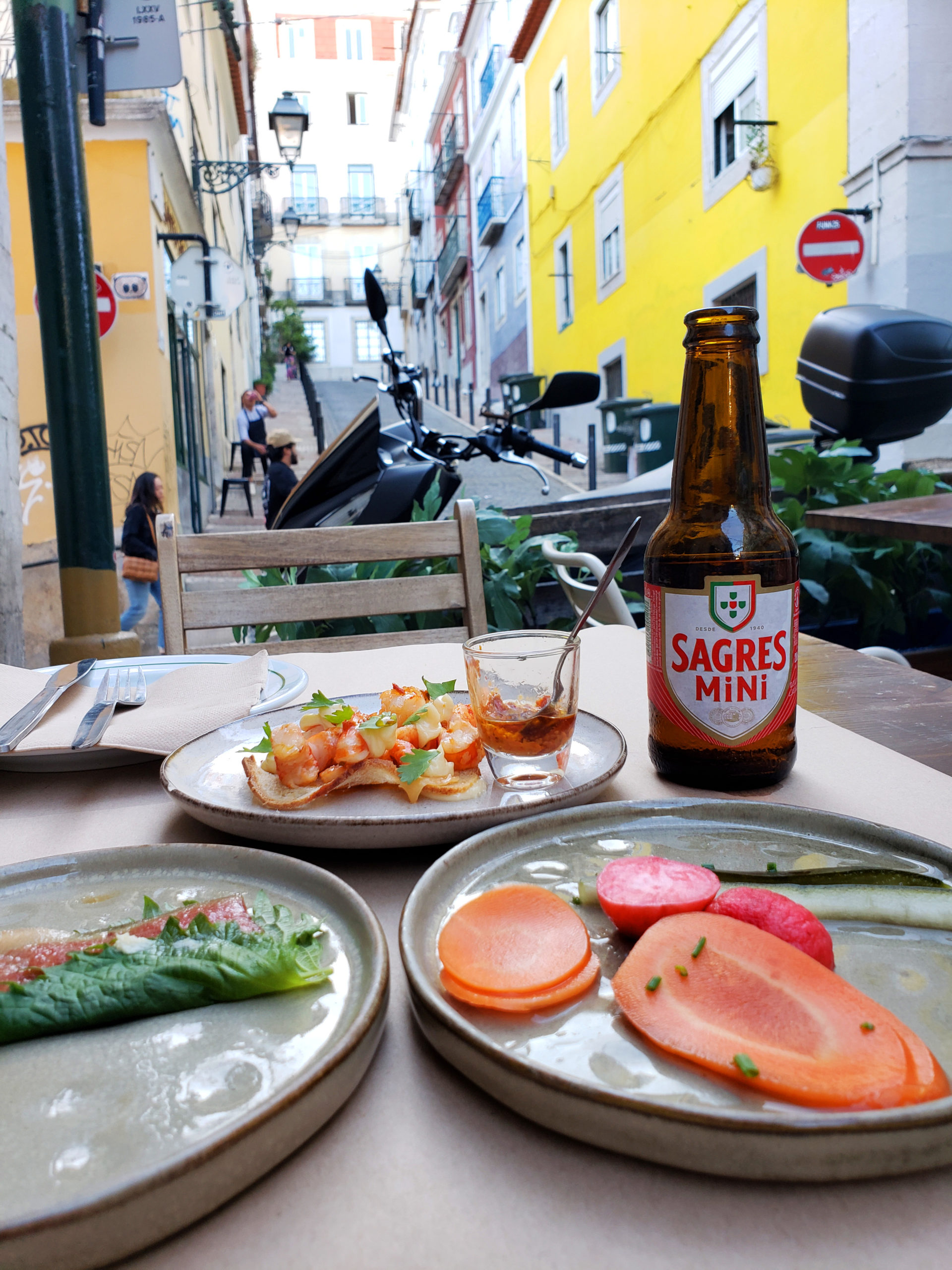

Bonjardim – Simple decor and street-side seating at a restaurant known for spit-roasted chicken with piri-piri sauce. Bonjardim is a Lisbon staple when it comes to chicken. Opt to get a full, or half portion of perfectly seasoned roasted chicken and don’t forget to pour on the hot chili oil, which is found at every table as a condiment. Located in an alley between Praça dos Restauradores and Rua das Portas de Santo Antão, this eatery is commonly known locally as Rei dos Frangos (King of Chickens). Make sure to get there early because this place fills up quick!

Where To Stay
Lisbon offers a range of accommodations that range from high end to backpacker budget friendly. During the summer months, Lisbon’s hotels, hostels and rental units are booked way in advance and the cost of them is inflated to high prices because tourists will pay it. Let’s be honest. Lisbon is a very popular city break for many Europeans, so if you are planning on coming, book well in advance to avoid slim pickings, or massive price increases. Since everything in Lisbon is fairly spread out, however still completely walkable, I suggest mapping out the things you want to see and stay within that specific area, or do what I did; break up your Lisbon trip in two parts by staying in two different neighbourhoods during your visit. I stayed in the Alfama District during the first half of my visit and up in the Baixa and Avenida District for the final leg of my trip.



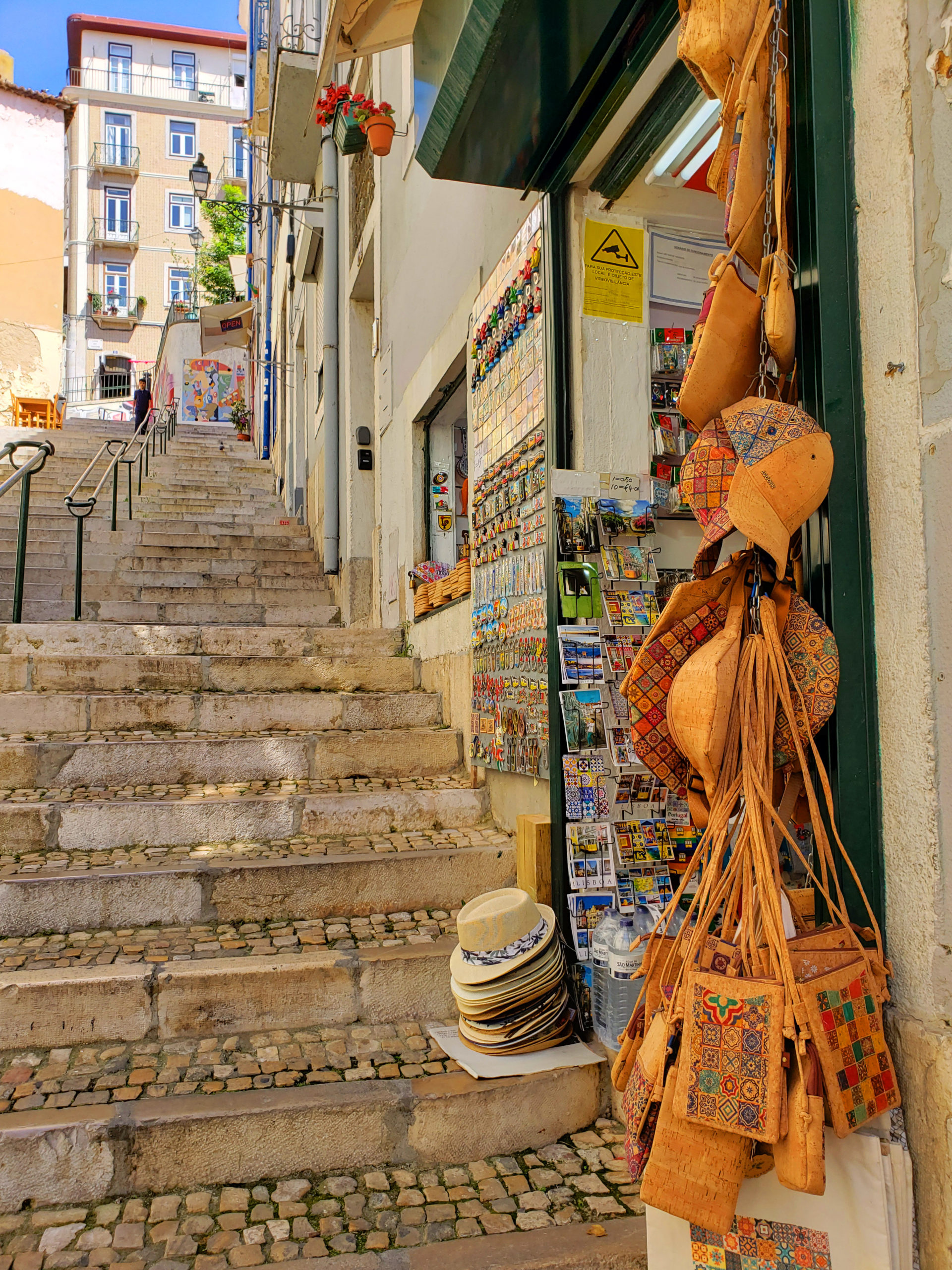
Lisbon is definitely a city that will win your heart time and time again. I can see why everyone I know that has visited Lisbon always raves about the culture, the food, the people, the beautiful narrow streets and so much more. It’s a foodie’s dream, a street photographer’s playground and a culture enthusiast’s heaven. With so much to see and so much to do, you can easily spend a full week in Portugal’s capital and only scratch the surface of what it has to offer.
Have you been to Lisbon? If you have, tell me in the comments below what you liked and didn’t like about the city. xo
